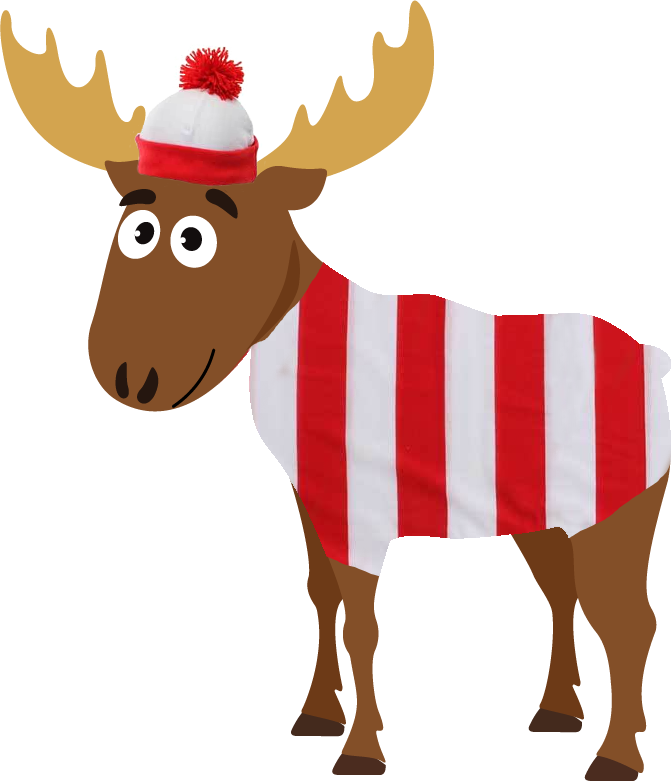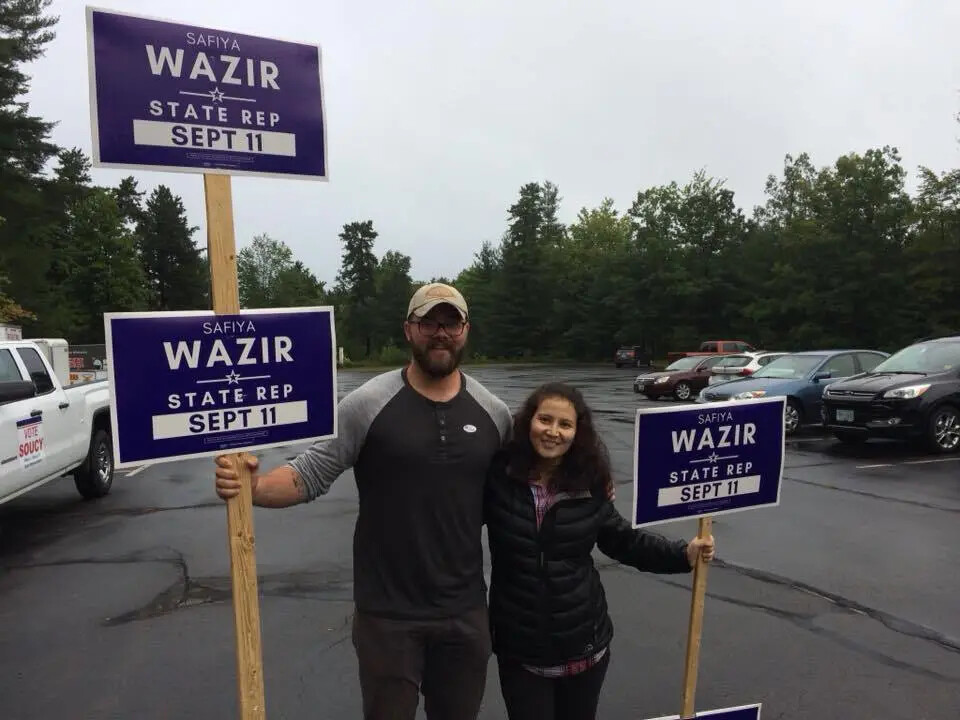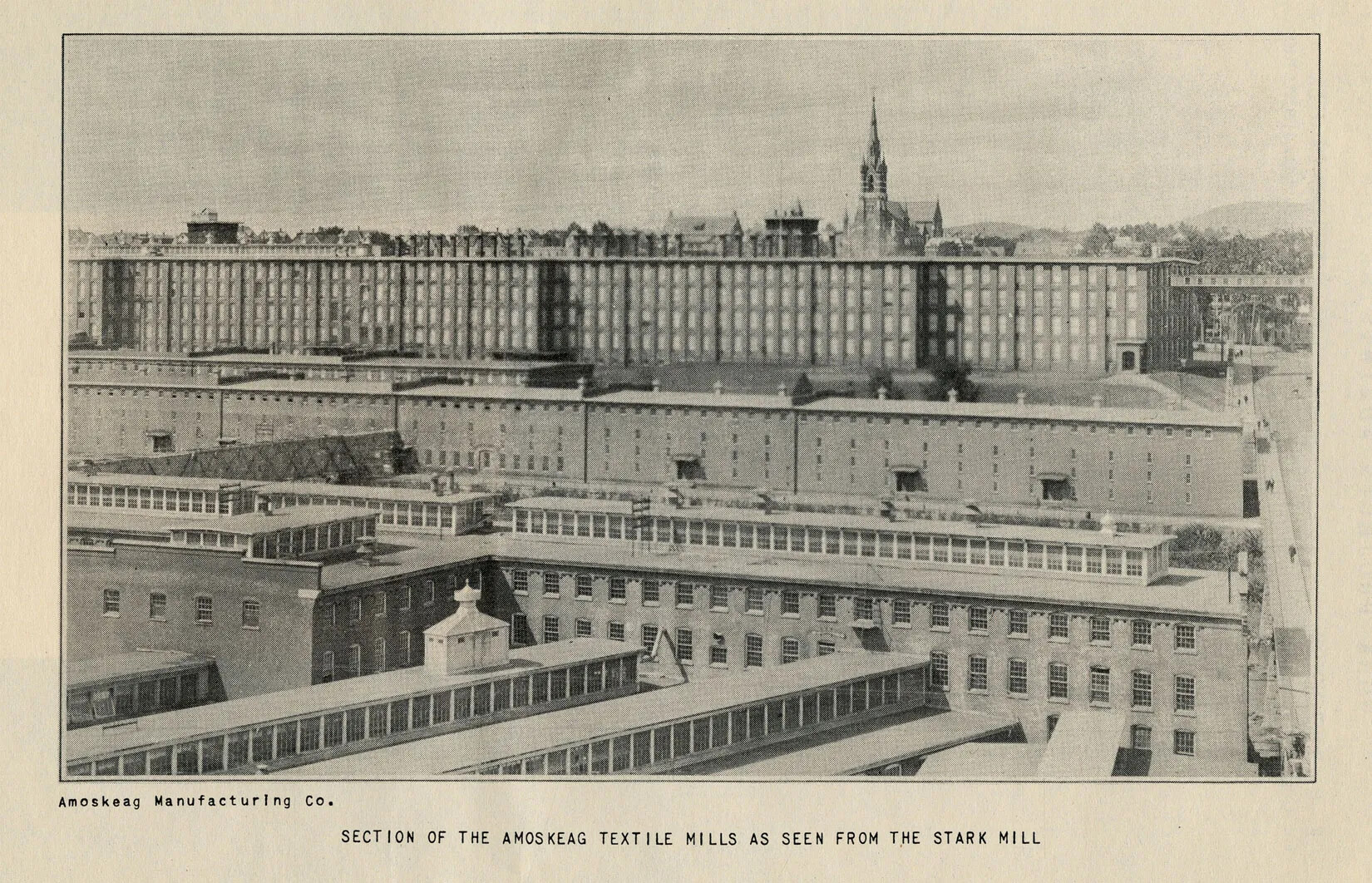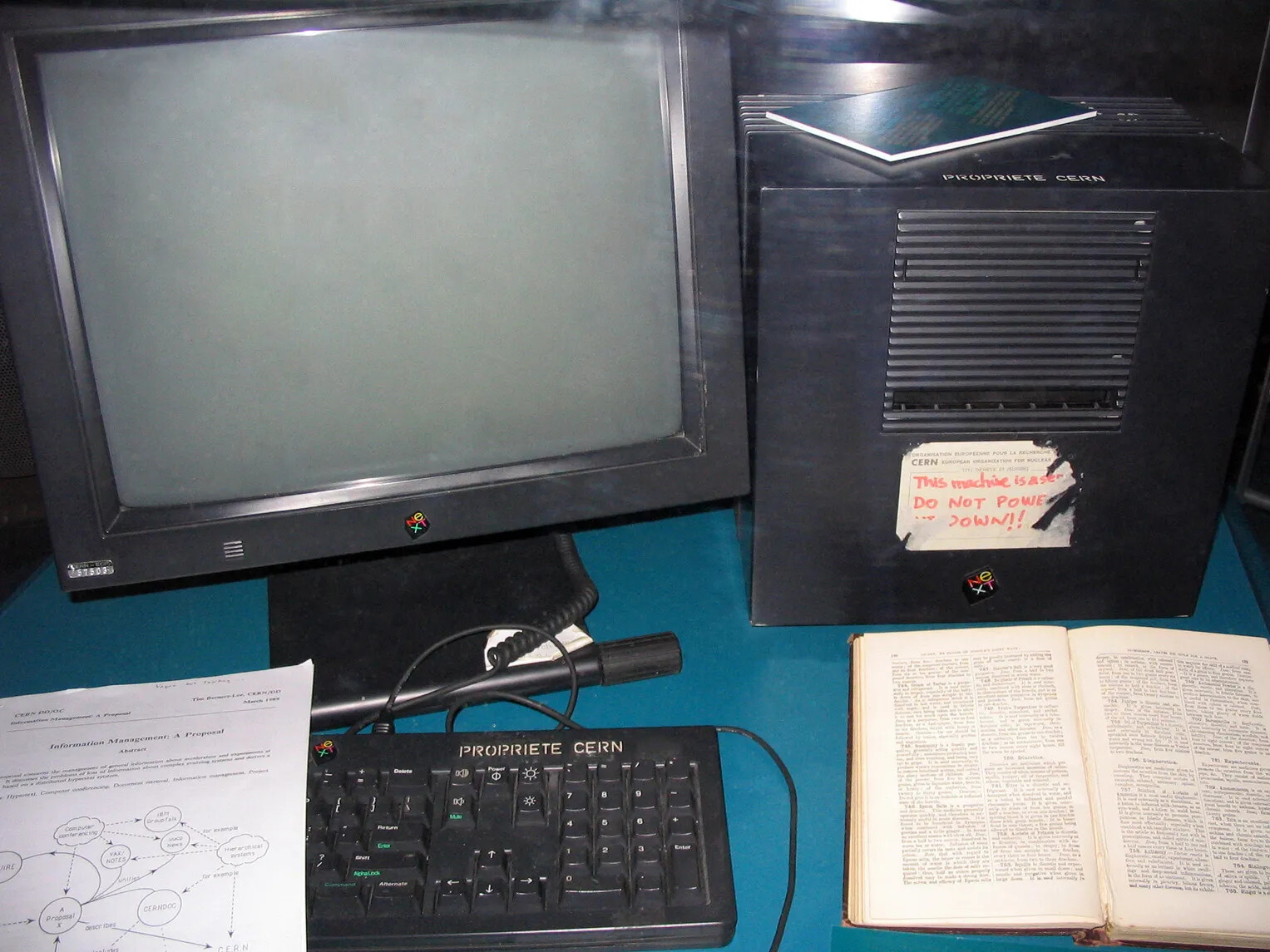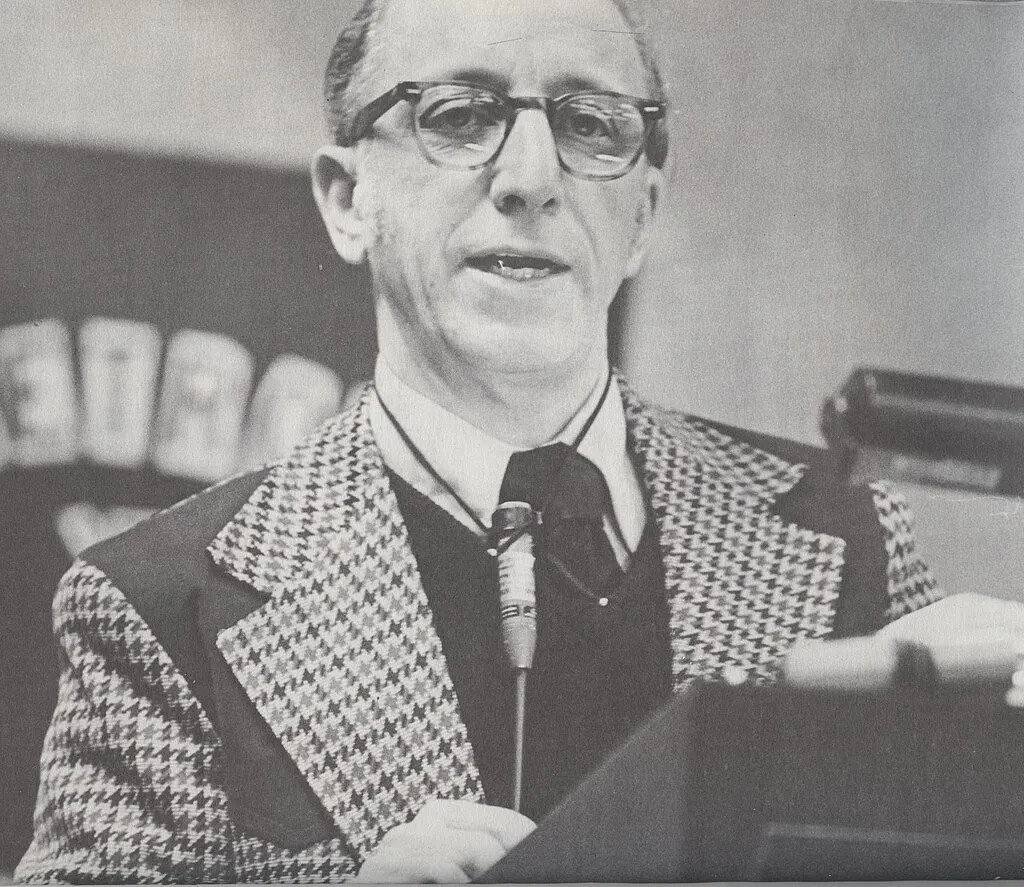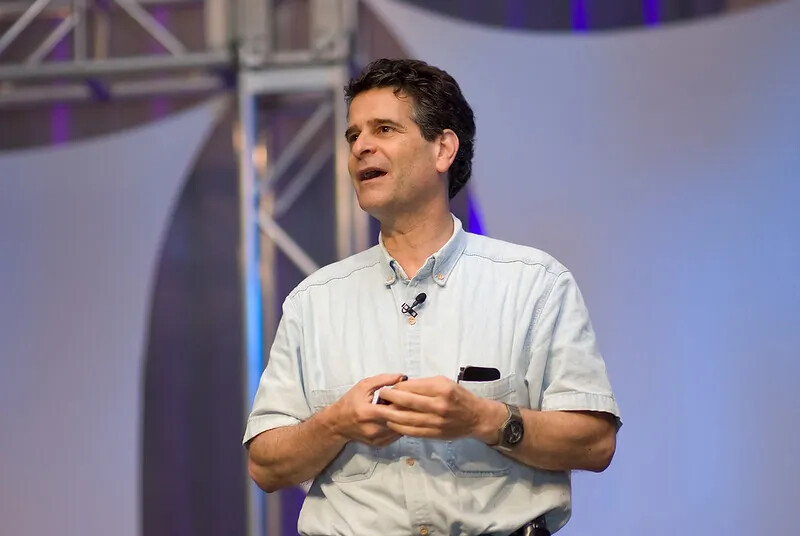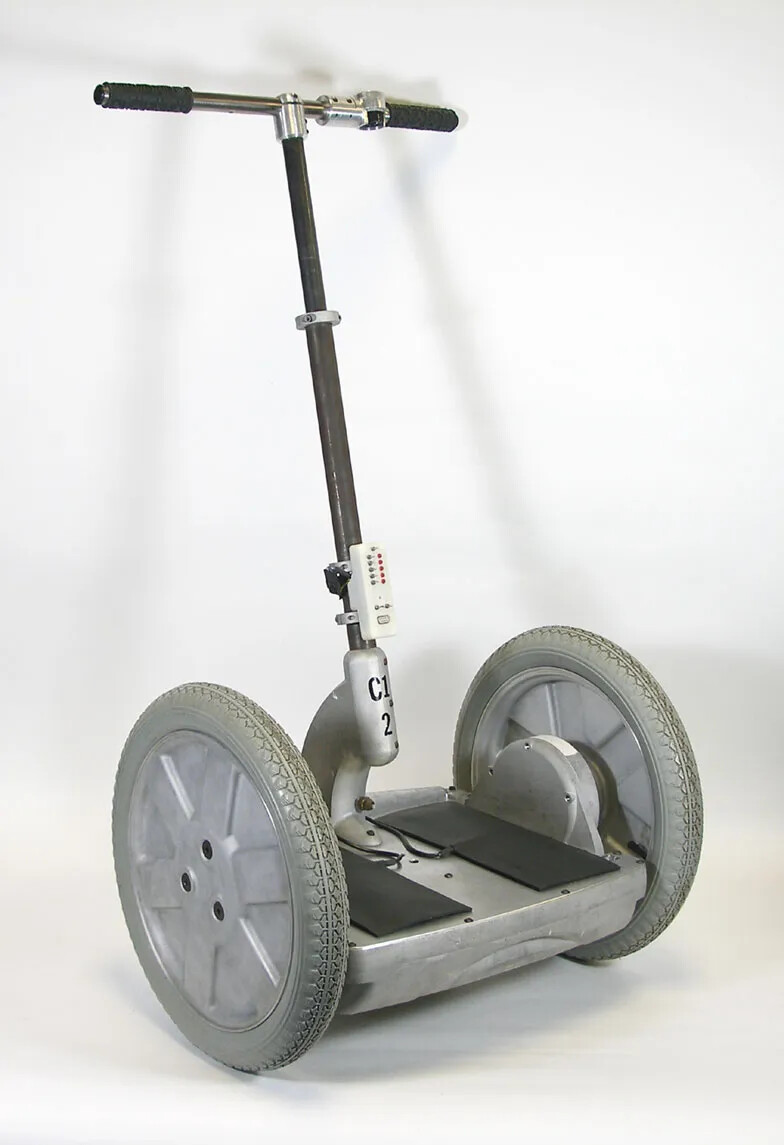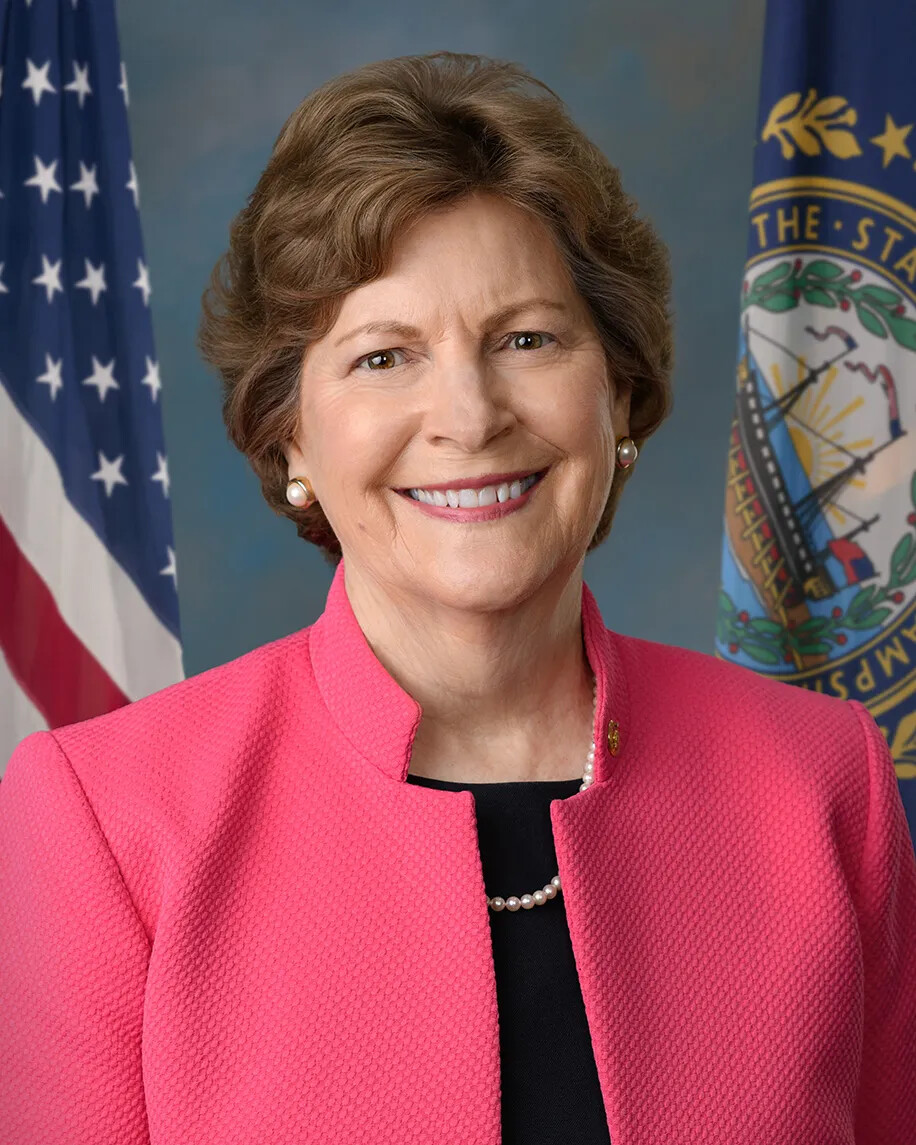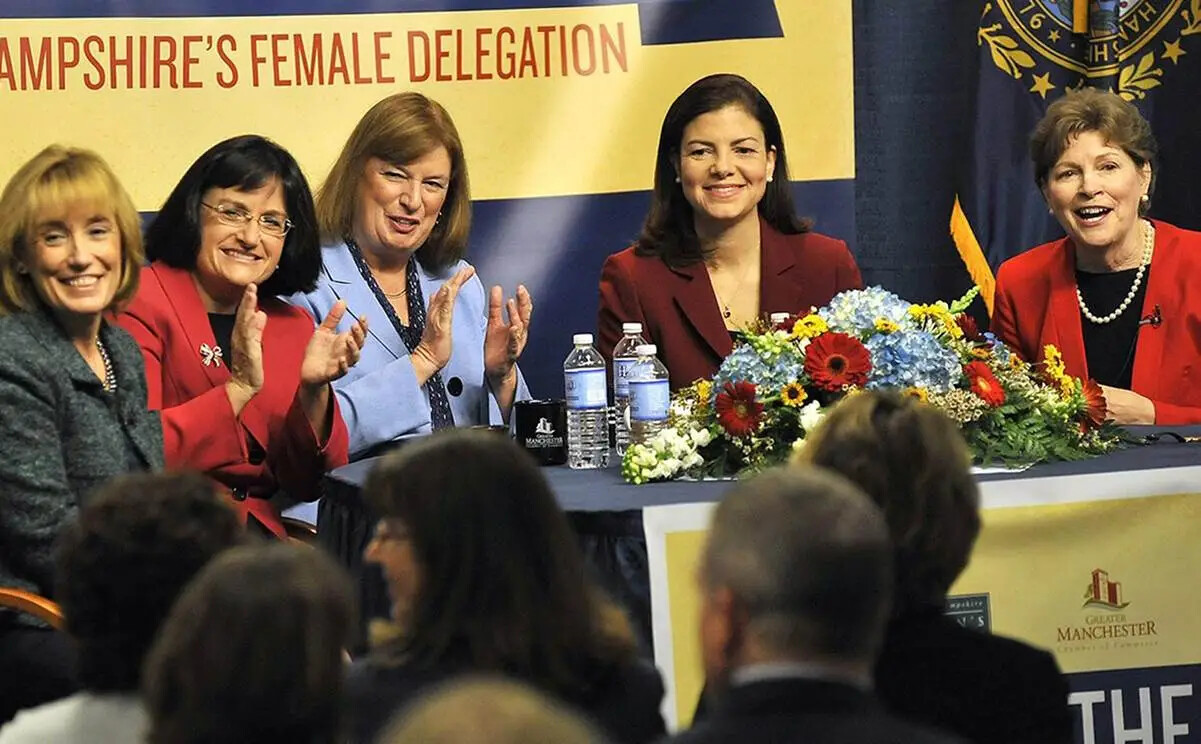How would you describe what it’s like to live in New Hampshire today? If you could travel in time 100 years into the future, how do you think historians would write about the New Hampshire we know? What big ideas or trends would they see in the way we live?
As you learn about New Hampshire today, think about the following questions:
- What ideas have defined New Hampshire history and shaped the Granite State’s character?
- How can we celebrate culture and adapt to diversity in New Hampshire today?
The People
Who lives in New Hampshire today?
Today, nearly 1.4 million people live in New Hampshire. Most people live in the southern part of the state, either in the Merrimack Valley or in the seacoast region. In fact, 75% of the people in New Hampshire live in one of those areas of the state. Because this part of the state is close to Boston, Massachusetts, it is sometimes thought of as the suburbs of the Boston metro area. Many people in the southern part of the state work in Boston and commute there for their jobs.

Caption:
This highway sign in Boston, Massachusetts, directs drivers to Interstate 93 North toward New Hampshire. Many people who live in southern New Hampshire commute to work in Boston. In fact, in 2020, nearly one in five New Hampshire workers commuted to Massachusetts.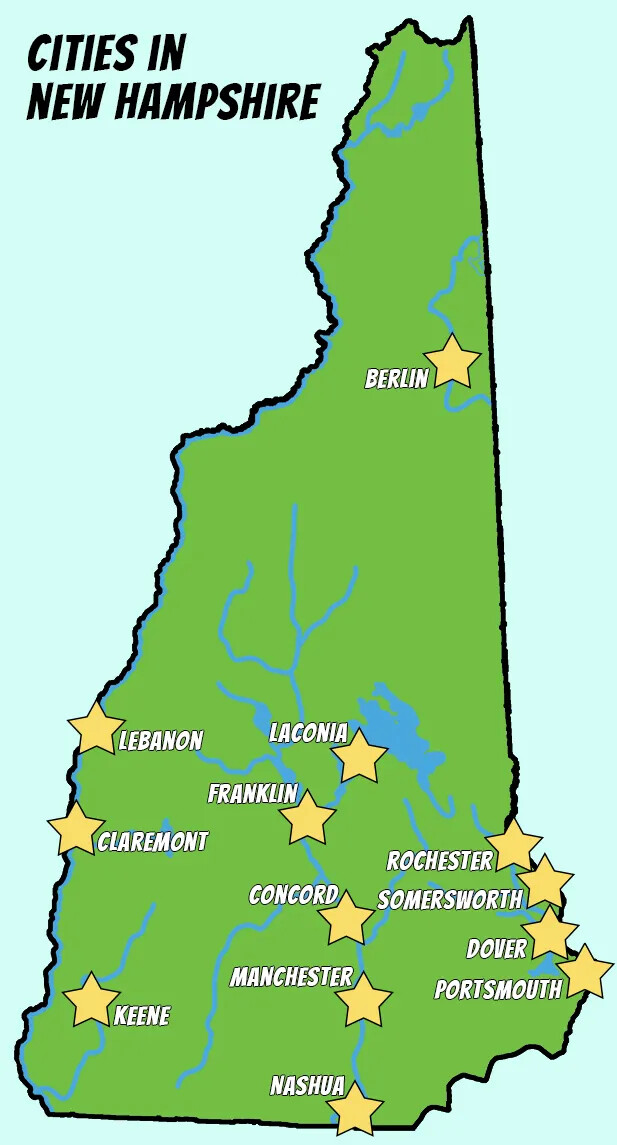
Caption:
There are 13 cities in New Hampshire.There are 13 cities in New Hampshire. The largest city is Manchester, which has more than 115,000 people. The smallest city is Franklin, which has less than 9,000.
Most people in New Hampshire live in a town. Towns can be just as big as cities. They just have a different kind of government. There are 221 towns in the state. The largest town is Derry, where 34,000 people live. The smallest town in New Hampshire is Dixville, with a population of just 4 people.
Just over 50% of the state’s population lives in urban areas, where people live close together. The other half live in rural areas, which means there is lots of land between them and their neighbors.
Some families have been in New Hampshire for generations, but lots of people move in and out of New Hampshire all the time. In fact, more than half of Granite Staters were born in a different state.
Racial and Ethnic Diversity
How diverse is New Hampshire?
When we talk about diversity, we mean that people all around the world are different. Your family, friends, neighbors, and classmates may all have different likes and dislikes, may have different talents and abilities, may look different, and have different traditions and cultures. The same is true in New Hampshire.

Caption:
Diversity means that people all around the world are different. Your family, friends, neighbors, and classmates may all have different likes and dislikes, may have different talents and abilities, may look different, and have different traditions and cultures.
Caption:
Today immigrants come from all over the world to live in New Hampshire. Sports like soccer can bring people together, even if they don't speak the same language or share the same customs. These kids are part of a soccer club with the Inti Academy in Manchester. Inti Academy was a nonprofit organization that provided soccer clubs, after-school activities, art classes, and other programs for new American kids.For example, there have been lots of Native Americans living in New Hampshire for thousands of years.
Starting in the colonial period, people from Europe moved to New Hampshire from many different countries, like England, Germany, Greece, Russia, and Poland. Africans and African Americans have lived in New Hampshire since 1645, and there are people from Asian and Hispanic (also called Latinx) backgrounds too.
These different people have unique cultures and traditions, but they are all Granite Staters.
For the past several decades, New Hampshire has been growing more diverse. In 1990, 98% of the people who lived in New Hampshire were white. Now, for the first time since the 17th century, less than 90% of New Hampshire’s residents are white. The population of Black and other people of color in New Hampshire is growing larger every year.
Immigration
One of the reasons New Hampshire is becoming more racially diverse is because of people moving to New Hampshire from other countries.
There have been three big waves of immigration to New Hampshire. The first wave was during the colonial period, when thousands of people came to New Hampshire from England and Scotland.
The second wave was during the 19th century, when thousands of people came to New Hampshire from other parts of Europe and Canada. During these years, immigrants arrived in the Granite State from countries like Ireland, Greece, Russia, Germany, Norway, Finland, Sweden, and Italy. A lot of French-Canadians came from Quebec to New Hampshire too.
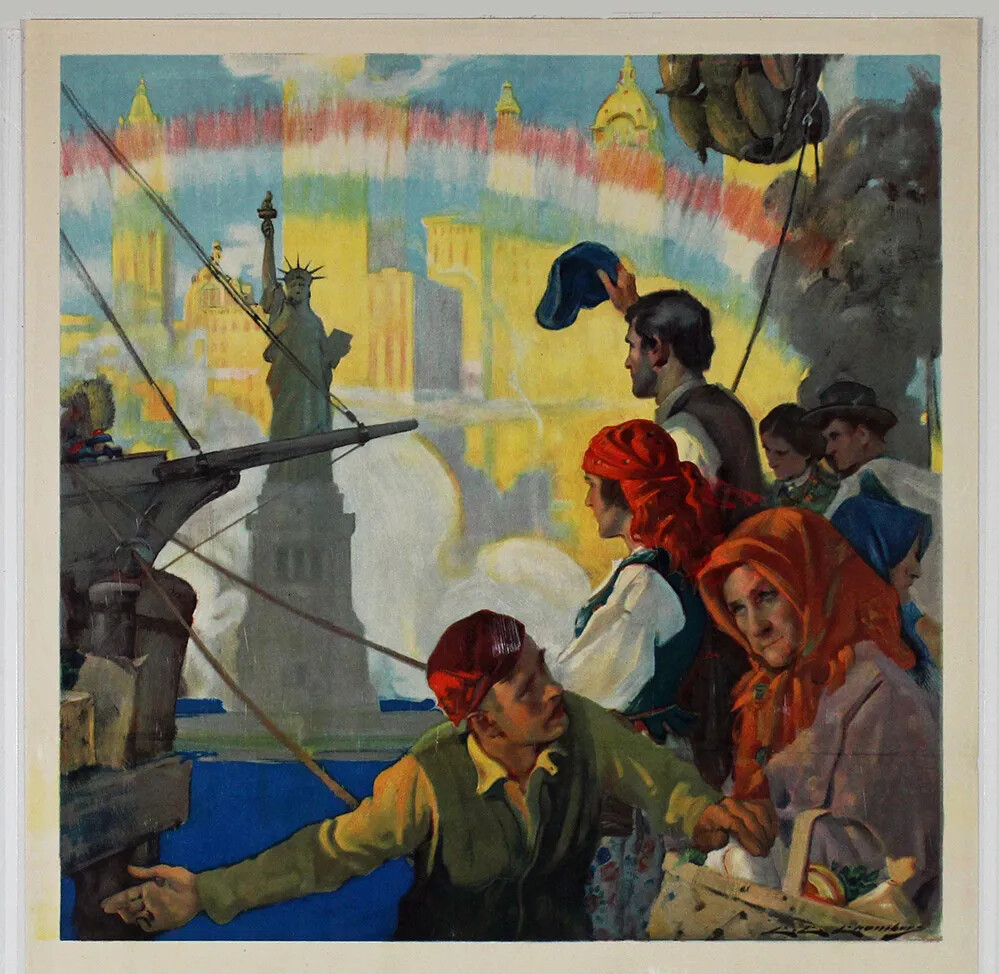
Caption:
This poster shows a group of immigrants on board a ship arriving at the harbor in New York City. They are greeted by the Statue of Liberty, and probably entered the United States at Ellis Island.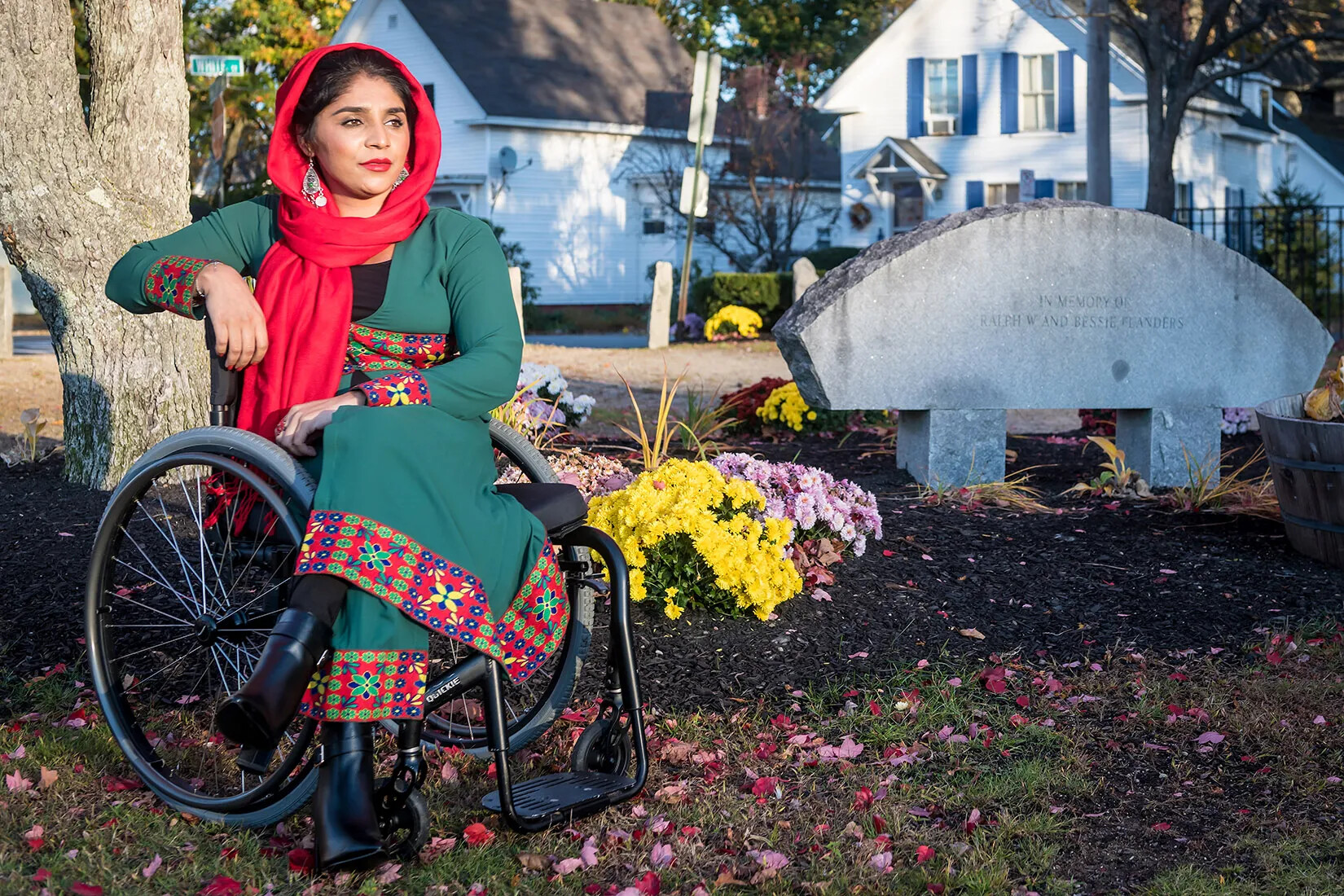
Caption:
Some cities in New Hampshire are part of the refugee resettlement program. A refugee is a person who leaves their home country because they are threatened in some way. The federal government identifies certain cities as places where refugees can live when they come to America, and provides services for them. This woman is originally from Afghanistan, and she is pictured in White Park in Concord.Caption:
Thousands of people fled from war-torn countries in the 1970s and 1980s. The American government made arrangements with several cities around the country to take in these refugees and help them get settled in new communities. Some New Hampshire cities, like Manchester, became official resettlement communities. This program set off a new wave of immigration to New Hampshire, as people from African countries like Sudan and the Democratic Republic of Congo came to the Granite State to start new lives.The third wave is happening right now! Since the late 20th century, thousands of people have immigrated to New Hampshire from all over the world, including Africa, Asia, South America, and Central America. A lot of people from Canada have come to New Hampshire during this period as well.
Fewer people immigrate to New Hampshire than to other parts of the United States, but there are more new immigrants to New Hampshire now than there were in the 20th century.
Some cities in New Hampshire are part of the refugee resettlement program, which is run by the federal government. This program chose the cities of Manchester, Concord, Nashua, and Laconia to host groups of immigrants who are trying to escape violence and persecution in their home countries. Many of these immigrants come from countries where there is a civil wargoing on. Many of them are from Africa, the Middle East, and Eastern Europe.
Cultural Revivals
How do the people of New Hampshire celebrate their heritage?
In the late 20th century, Granite Staters of all races and ethnicities became more interested in their cultural heritage, especially in learning where their families came from and the traditions handed down in their families or ethnic communities. Many people decided to learn more about their cultural heritage and share it with others.
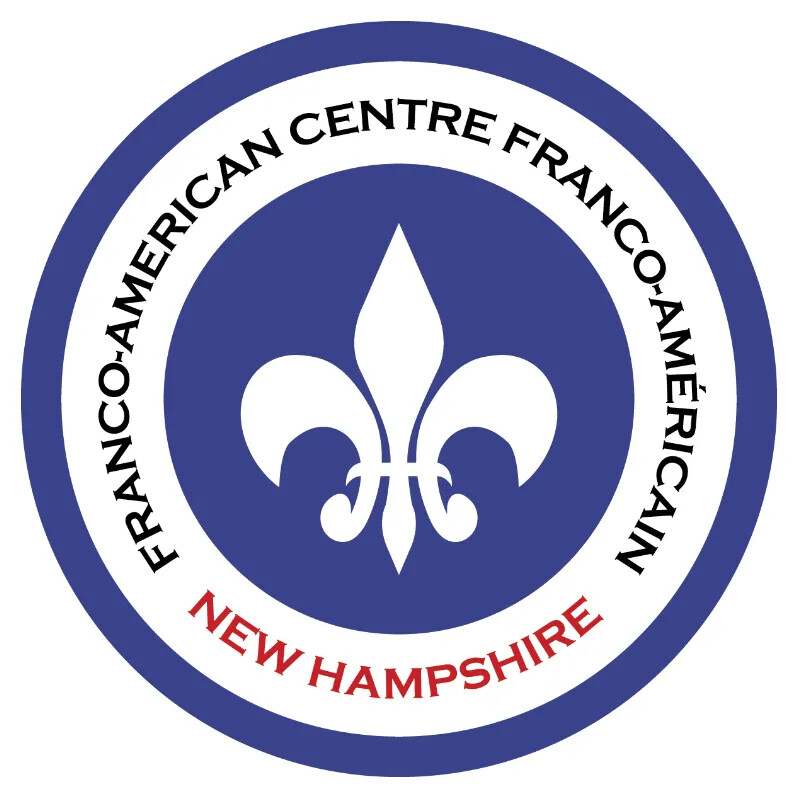
Caption:
In the late 20th century, many Granite Staters decided to learn more about their own cultural heritage and share it with others. For example, the Franco-American Centre, or Le Centre franco-américain, was founded in 1990 in Manchester. Many people in New Hampshire have ancestors who immigrated from French Canada. The Franco-American Centre provides programs like French language classes, lectures, concerts, social events, and festivals such as the annual Poutine Fest. These programs connect Franco-Americans throughout the state, as well as other people of French heritage and anyone interested in French culture.
Caption:
A family tree is a record of a family. Every person in the family is listed on the family tree, and each part of the family is its own branch.Genealogy
For some people, this interest in their heritage led them to study their own family’s history, which is called genealogy. Family historians try to learn everything they can about their ancestors—who they were, where and when they were born and died, what their jobs were, who their children were.
Genealogists use all sorts of documents and records to find this information. Then they create a family tree. Every person in the family is listed on the family tree, and each part of the family becomes a branch of the tree.
They also learn about the countries their families came from and the traditions that were popular in those countries. Those traditions are part of their cultural heritage.
Storytelling and Music
Not all history is written down in documents, though. For many cultures, their traditions are handed down through storytelling and music. Since the late 20th century, storytelling has become very popular in New Hampshire once again. It is an old tradition because before the invention of radio, television, and movies in the early 20th century, people told stories to entertain one another.
Music and storytelling are very similar. Songs and stories were both handed down from generation to generation, usually without being written down. People would learn the stories and songs by listening to them and memorizing them.
In 2009 a group was formed called the New Hampshire Storytelling Alliance. Its members travel all over New Hampshire to share their stories. Some of the stories they tell are based on old New Hampshire tales. Others are new stories that they have created themselves. And some stories were brought here from other countries and have become part of New Hampshire’s cultural heritage. French-Canadian storytelling is especially popular in New Hampshire because so many people in the state have French-Canadian ancestors.
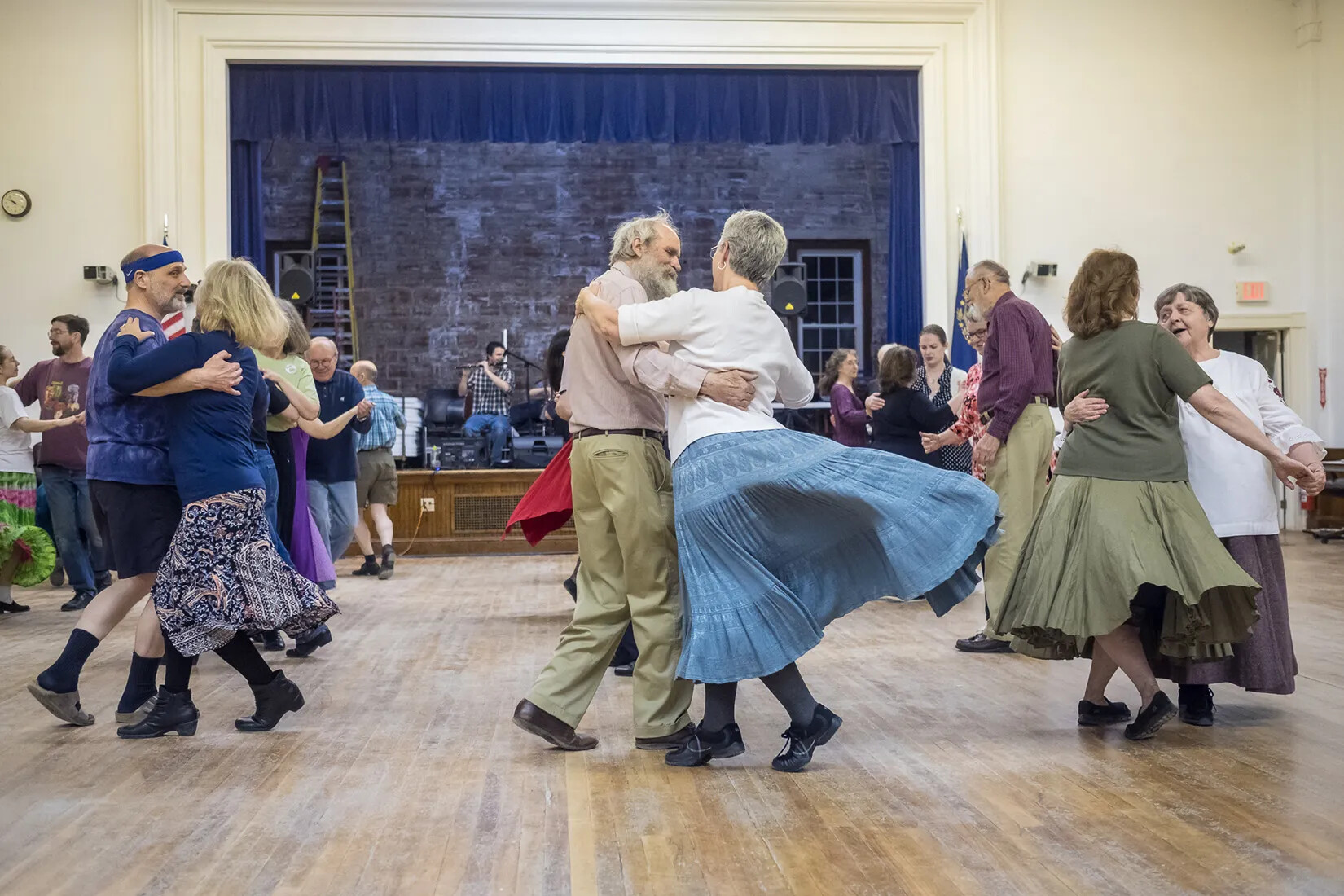
Caption:
Contra dance is a kind of folk dance that is popular in New Hampshire. People dance together in long lines. A "caller" calls the steps for the dancers. There is live music, usually a fiddle but also other instruments. The songs are often Irish, English, Scottish, or French-Canadian. This photo is of a monthly contra dance at the town hall in Kingston, New Hampshire.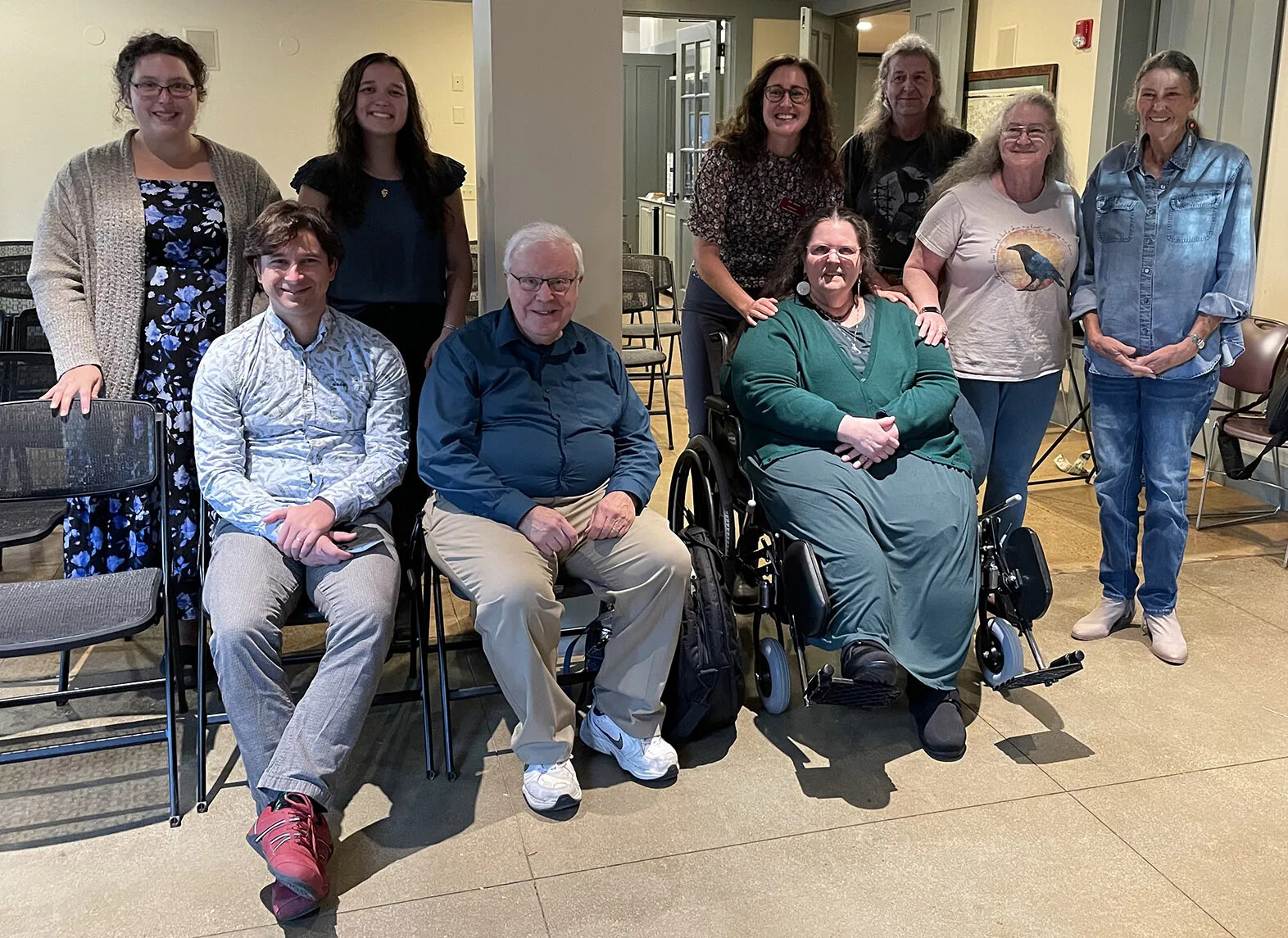
Caption:
Strawbery Banke Museum in Portsmouth hosts a Native American storytelling festival every year called Dawnland StoryFest. This photo shows some of the event staff and storytellers from the 2022 festival, including Gayle Ross, a member of the Cherokee nation (standing, far right) and Anne Jennison, a New Englander with both European and Abenaki heritage (seated, far right).
Caption:
A traditional Abenaki story about why maple syrup is made in the spring.The Abenaki, who have lived in New Hampshire for thousands of years, have a very long tradition of storytelling. In recent years, the public has become more interested in Abenaki storytelling than ever before. In fact, there are several Abenaki storytelling festivals in New Hampshire. The most popular one is the Dawnland Storyfest at Strawbery Banke in Portsmouth.
These festivals offer an opportunity for Abenaki to share their culture with Granite Staters who want to learn more about the first people who lived here.
Music is another way that people celebrate their cultural heritage. Abenaki, African, Irish, and French-Canadian music have become very popular in New Hampshire. These different types of music are often based on specific types of instruments. For example, Abenaki and African music often uses a lot of drums and rattles. French-Canadian and Irish music usually includes fiddles or violins.
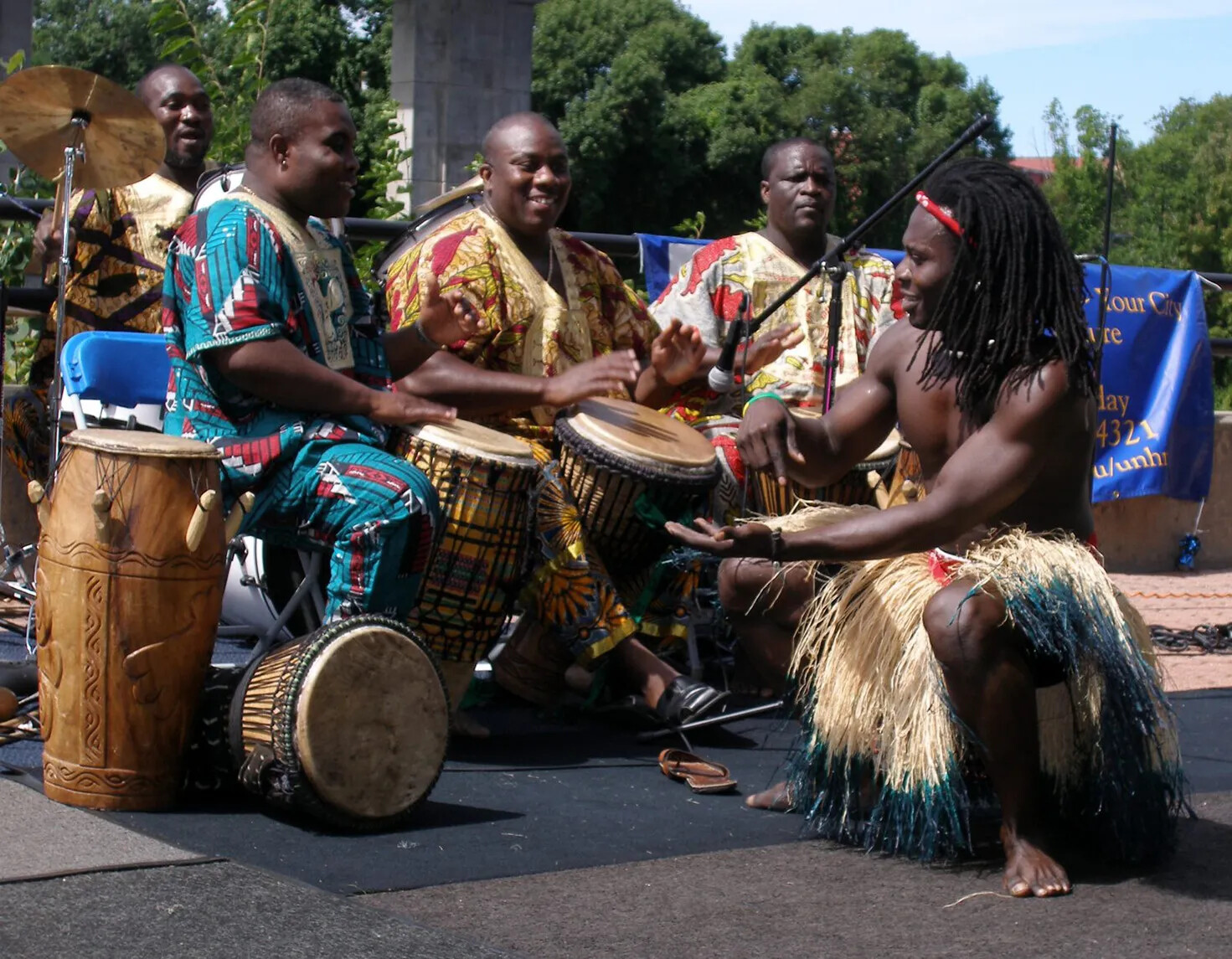
Caption:
Music is a great way for people to share their cultural heritage. There are many different musical cultures to celebrate in New Hampshire—French-Canadian fiddling, Irish folk songs, and Abenaki songs and drumming, to name just a few. The Akwaaba Traditional African Dance and Drum Ensemble was founded in 2002 in Manchester, NH. The name Akwaaba means "welcome" in the Twi language of the Ashanti tribe of Ghana. The Akwaaba Ensemble performs all over the world. Its founder, Theo Martey, is currently the New Hampshire Artist Laureate. This photo shows the group performing at the University of New Hampshire-Manchester.Caption:
French-Canadians were the largest immigrant group to come to New Hampshire during the Great Wave. Let's listen to some of the music they brought with them!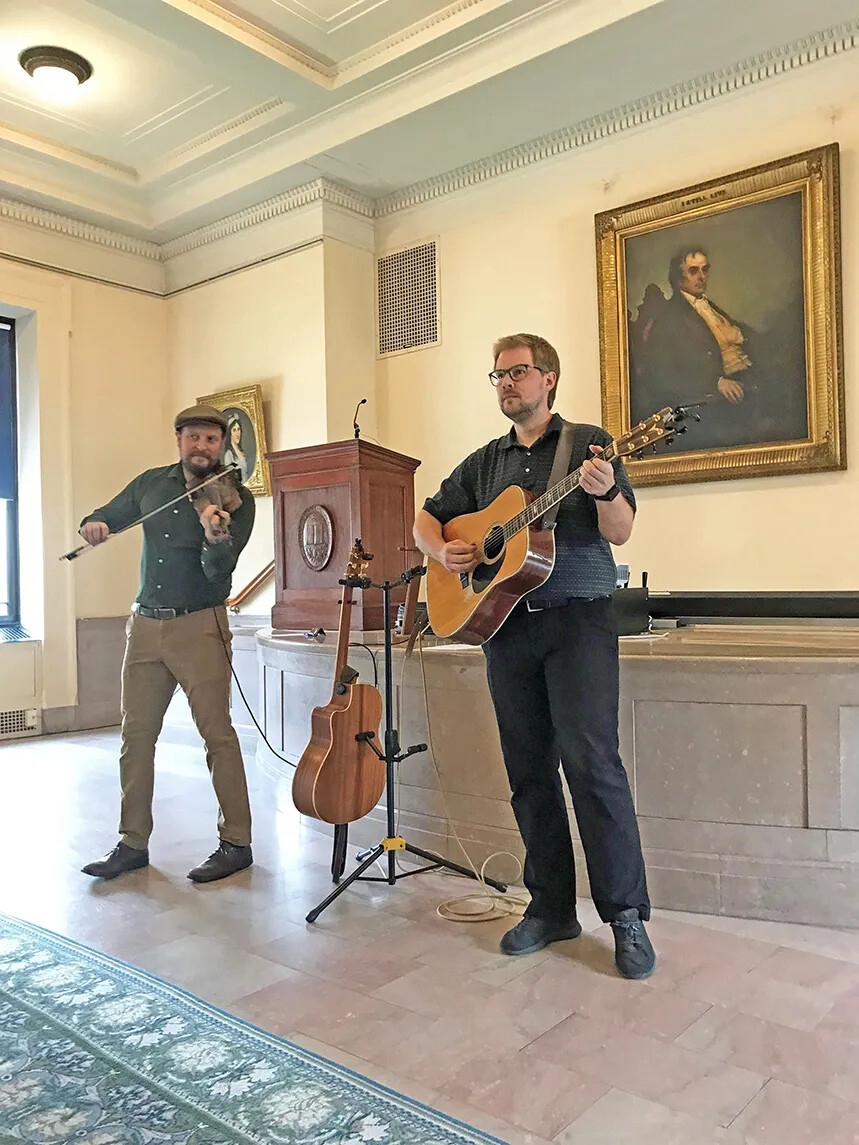
Caption:
Folk music is one way for people to remember and share their cultural heritage. Every part of the world has its own folk music traditions. A lot of New England folk music has roots in Scots-Irish, English, and Irish music. The Jordan TW Trio is a popular folk music group from New Hampshire that performs all over the world. In this photo, Jordan Tirrell-Wysocki is performing at the New Hampshire Historical Society with guitarist Matthew Jensen.People have also become very interested in folk music, which is a traditional form of the music that was popular in New Hampshire in the 18th century, the 19th century, and the early 20th century. Folk music often features fiddles and guitars. New Hampshire folk music usually includes songs about life in small towns and on farms as this is how most Granite Staters lived when a lot of this music was created.
Humanities To Go
A lot of people’s cultural heritage is shared through public lectures and performances.
One of the most popular ways to learn more about New Hampshire’s racial and ethnic heritage is through Humanities To Go, a program through New Hampshire Humanities, which brings speakers to communities all over the state.
Humanities To Go speakers share the history and culture of different peoples. One speaker might give a lecture about a topic from New Hampshire’s history, like the Great Sheep Boom of the 1830s. Another speaker might tell people about the culture of New Hampshire’s Black community. And another speaker might play music handed down from the French-Canadians who came to New Hampshire during the second wave of immigration in the 19th century.
Humanities To Go programs are free to the public so that everyone can learn more about the culture and ideas that have shaped our state. They are an important way for everyone in the community to come together.
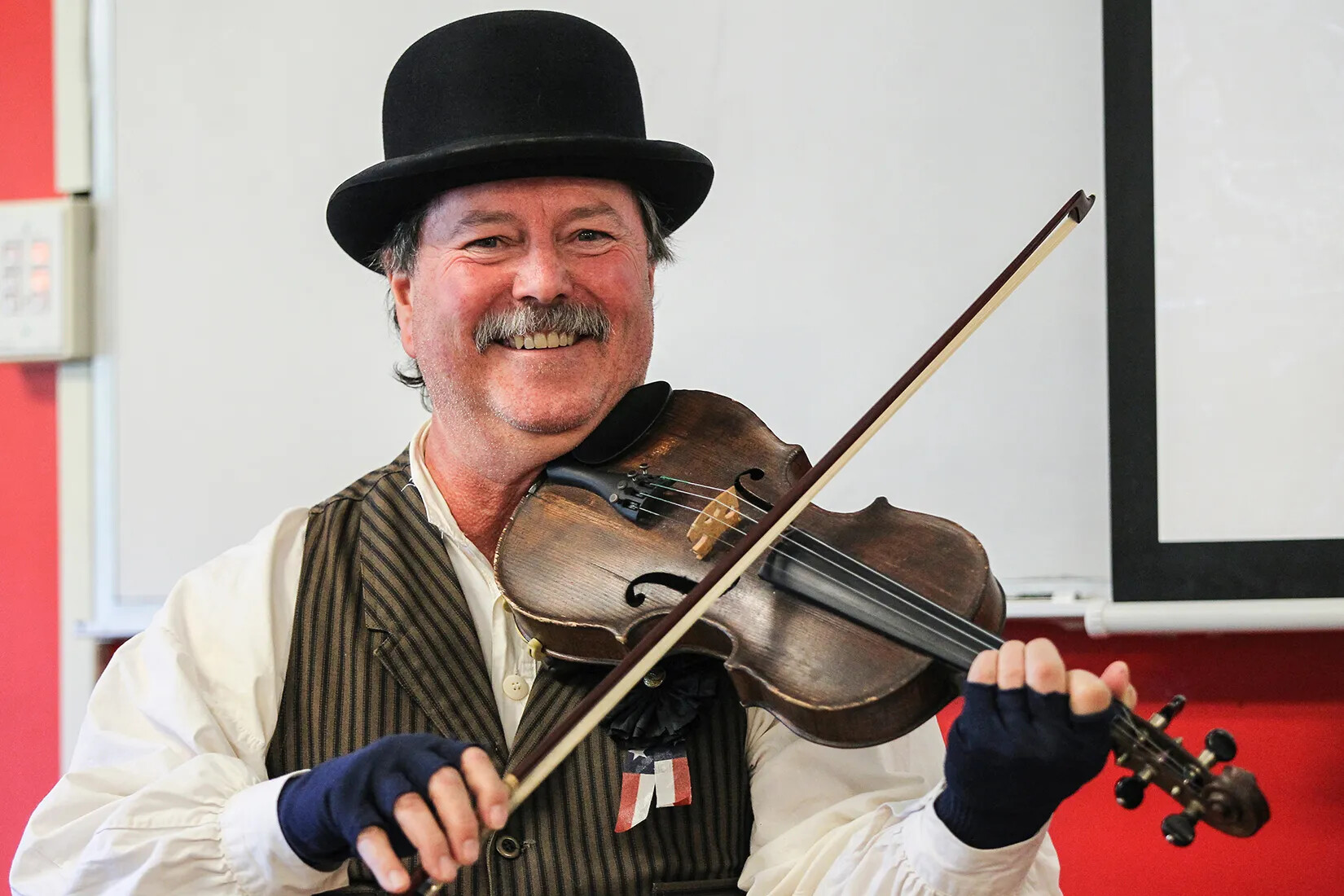
Caption:
Humanities to Go (HTG) is a program through New Hampshire Humanities that brings speakers to communities all over the state. HTG programs help everyone can learn more about the culture and ideas that have shaped New Hampshire. They are an important way for everyone in our community to come together. The HTG presenter in this photo, Woody Pringle, is a musician and educator who performs and teaches about folk music.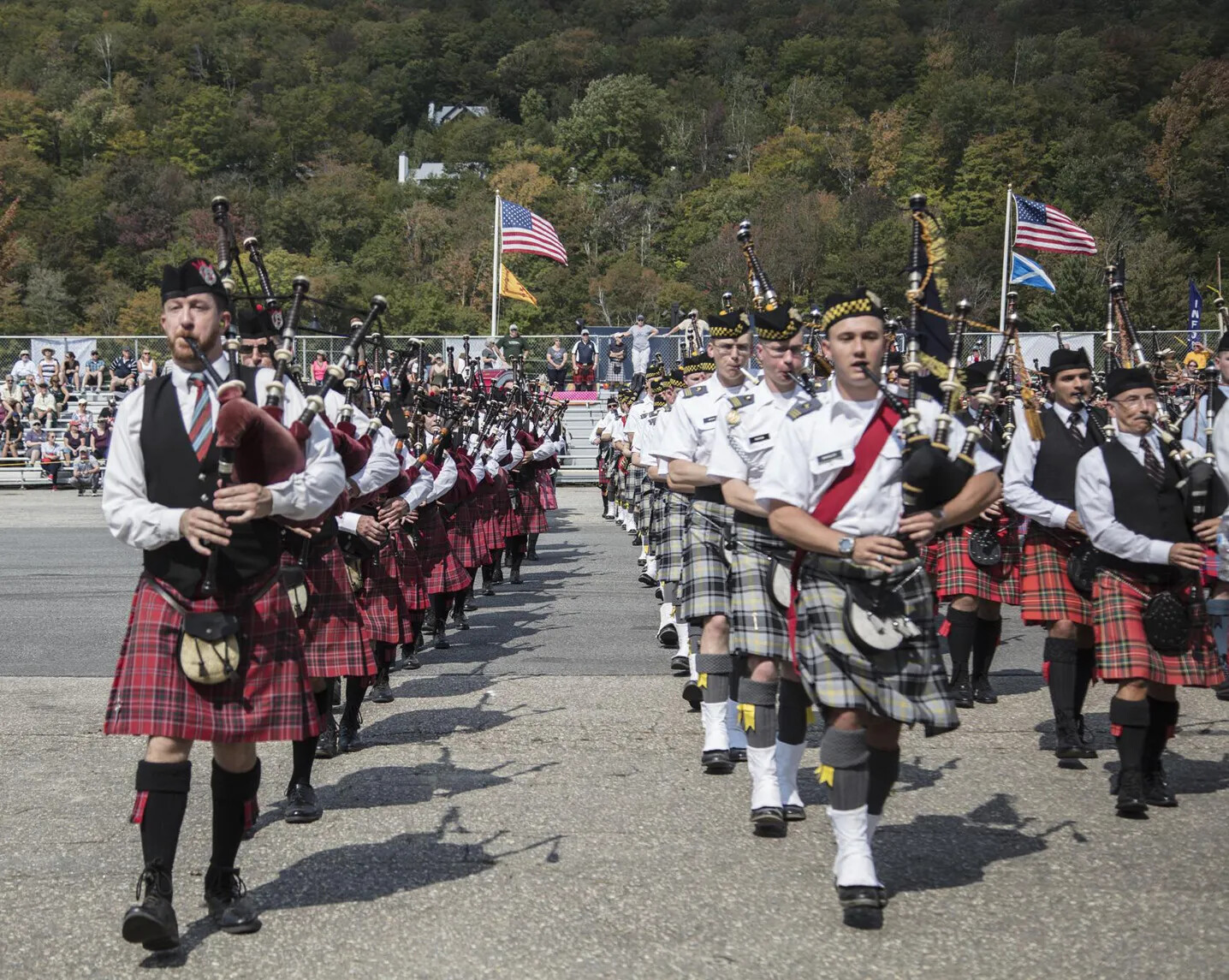
Caption:
The New Hampshire Highland Games and Festival celebrates Scottish culture and traditions. Many Granite Staters have Scottish ancestry, because there was a wave of immigration from Scotland in the 1700s. The Highland Games started in 1976 and takes place every year at Loon Mountain. It has bagpiper parades, musical performances, historical reenactments, sheep dog competitions, food and crafts, and lots more.Festivals
Cultural festivals are another way that people can learn about Granite Staters’ heritage. These festivals have become very popular in New Hampshire in the 21st century. They usually include food, music, dancing, storytelling, arts, and crafts.
Some festivals focus on just one ethnic group, like the Glendi Greek Festival in Manchester or the Scottish Highland Games in Lincoln. Other festivals are multicultural and celebrate all cultures in one big event. At a multicultural festival, people might learn about Irish and Vietnamese culture at the same festival!
Rediscovered History
For some groups of people, the cultural revival of the late 20th century and 21st century has meant bringing more attention to their ancestors’ history in New Hampshire. This interest in rediscovering history is especially important if that history was forgotten or ignored.
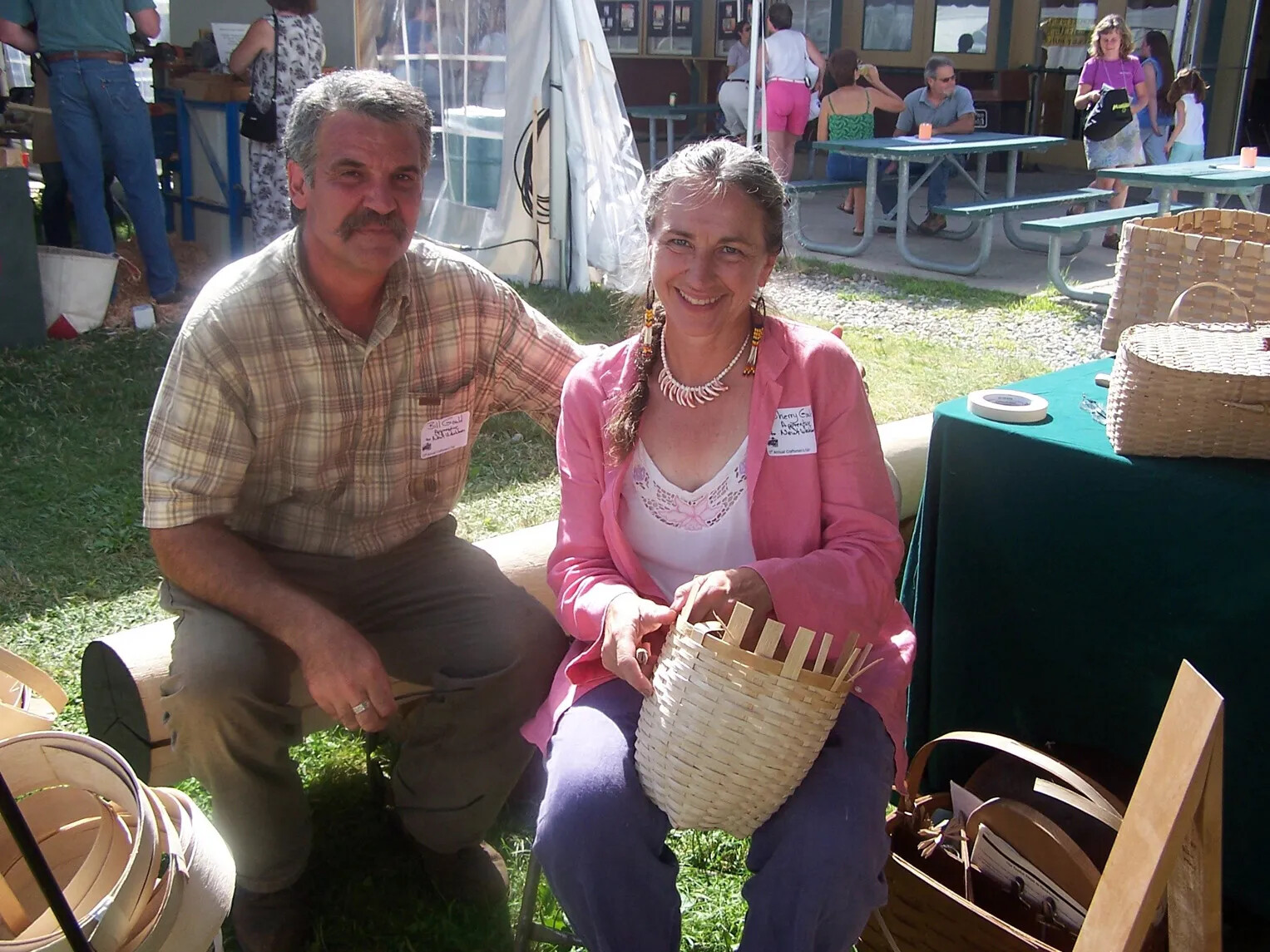
Caption:
Today, many Abenaki people still live in New Hampshire, as well as all over the world. They make traditional Abenaki crafts, like baskets, as well as jewelry, musical instruments, rattles, clothing, and all kinds of art. This photo is of Bill and Sherry Gould, who live in Warner, NH, and are Abenaki basket makers. Basket making is an important Abenaki art form. The Goulds show their works of art at museums and art fairs all over the country. The Goulds are from the Nulhegan Band of Coosuk Abenaki, a Vermont state-recognized tribe. This photograph was taken at the League of N.H. Craftsmen annual fair at the Mount Sunapee Resort.Many Abenaki share their heritage through festivals and events. Some bring programs to New Hampshire schools so children can learn more about indigenous customs and culture. Many Abenaki create traditional Abenaki crafts, like making a birch bark canoe using the same kinds of tools the Abenaki would have used long ago.
The Abenaki Trails Project is one of the groups working to rediscover and share indigenous history. This group works with towns and local historical societies to identify important places in Abenaki history and culture. They educate the public about these places by putting up signs and monuments, so that everyone can learn about them.
Black history is another part of New Hampshire’s heritage that has been getting more attention recently. In 1995, a historian named Valerie Cunningham started an organization called the Black Heritage Trail of New Hampshire to celebrate the contributions Black people made to New Hampshire's history.
The Black Heritage Trail puts up historical markers and offers public programs about the Black community in the state. They also conduct research on Black people who have lived in New Hampshire. Every year, they share more information on this topic with the public.
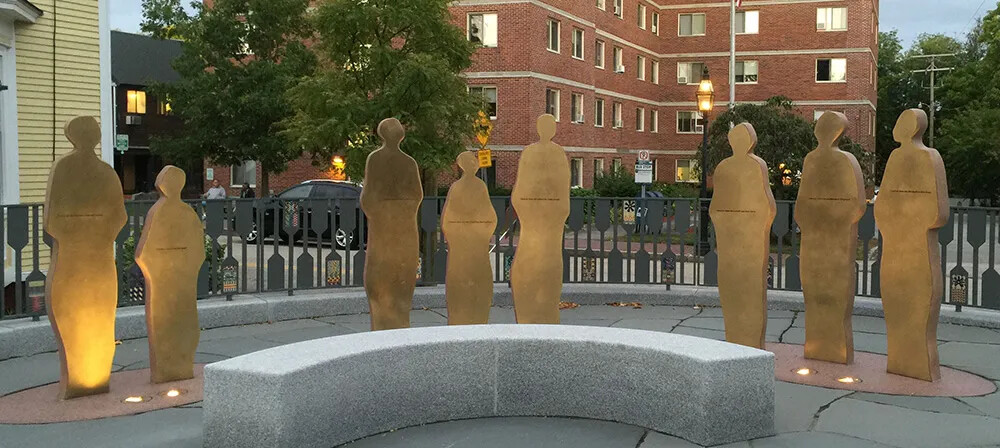
Caption:
In 2003, Portsmouth city workers rediscovered an African burying ground under Chestnut Street. This was a segregated burying ground for Portsmouth's Black community, both enslaved and free. It dated back to the early 1700s, but as Portsmouth grew and developed, it was eventually paved over and forgotten. When it was rediscovered, there was a big community and civic effort to restore and preserve it. In 2015, the African Burying Ground Memorial Park opened. It has sculptures, historic information, granite seating walls, a community plaza, and landscaping.African Burying Ground
In 2003, workers in Portsmouth discovered a Black cemetery under Chestnut Street, which is near the center of the downtown. The cemetery had been used to bury Black Portsmouth residents in the 18th century, but it had been forgotten over the years. Eventually, the city built a street over it.
Once the cemetery was rediscovered, the Black Heritage Trail worked with Portsmouth city officials and community leaders to decide how to honor the people who had been buried there. They decided to close that section of Chestnut Street and build a memorial where the cemetery had been. The entire Portsmouth community came together to celebrate the history of the Black community in Portsmouth when this park was dedicated.
Let's Review!
What are the big ideas in this section?
Granite State Population
Most of the 1.4 million people who live in New Hampshire are in the southern portion of the state, and most of them live in towns, rather cities. There are slightly more people living in urban communities than rural communities.
Third Wave of Immigration
New Hampshire has had three big waves of immigration throughout its history, and the third wave is happening right now. New arrivals in the modern era are usually from Africa, Asia, or Central and South America.
New Hampshire's Cultural Heritage
Many people have become interested in their cultural heritage, or where their family came from before arriving in NH. People explore and share their cultural heritage through storytelling, music, festivals, and genealogy, among other ways.
Rediscovering History
Many people are interested in rediscovering the history of groups that have traditionally been forgotten, especially NH's indigenous population and Black people.
The Economy
How has the New Hampshire economy changed in recent years?
In the early 19th century, factories and mills were vital to the state’s economy. The Amoskeag Manufacturing Company in Manchester was once the largest textile factory in the world, and there were other factories all over the state that made a wide variety of products, like shoes, glassware, train engines, rifles, blankets, paper, and lots more.
Many of those factories went out of business in the 20th century, and lots of Granite Staters lost their jobs as a result. The mid-20th century was a tough time for a lot of people in New Hampshire, and once the factories closed, many communities had mill buildings that were empty.
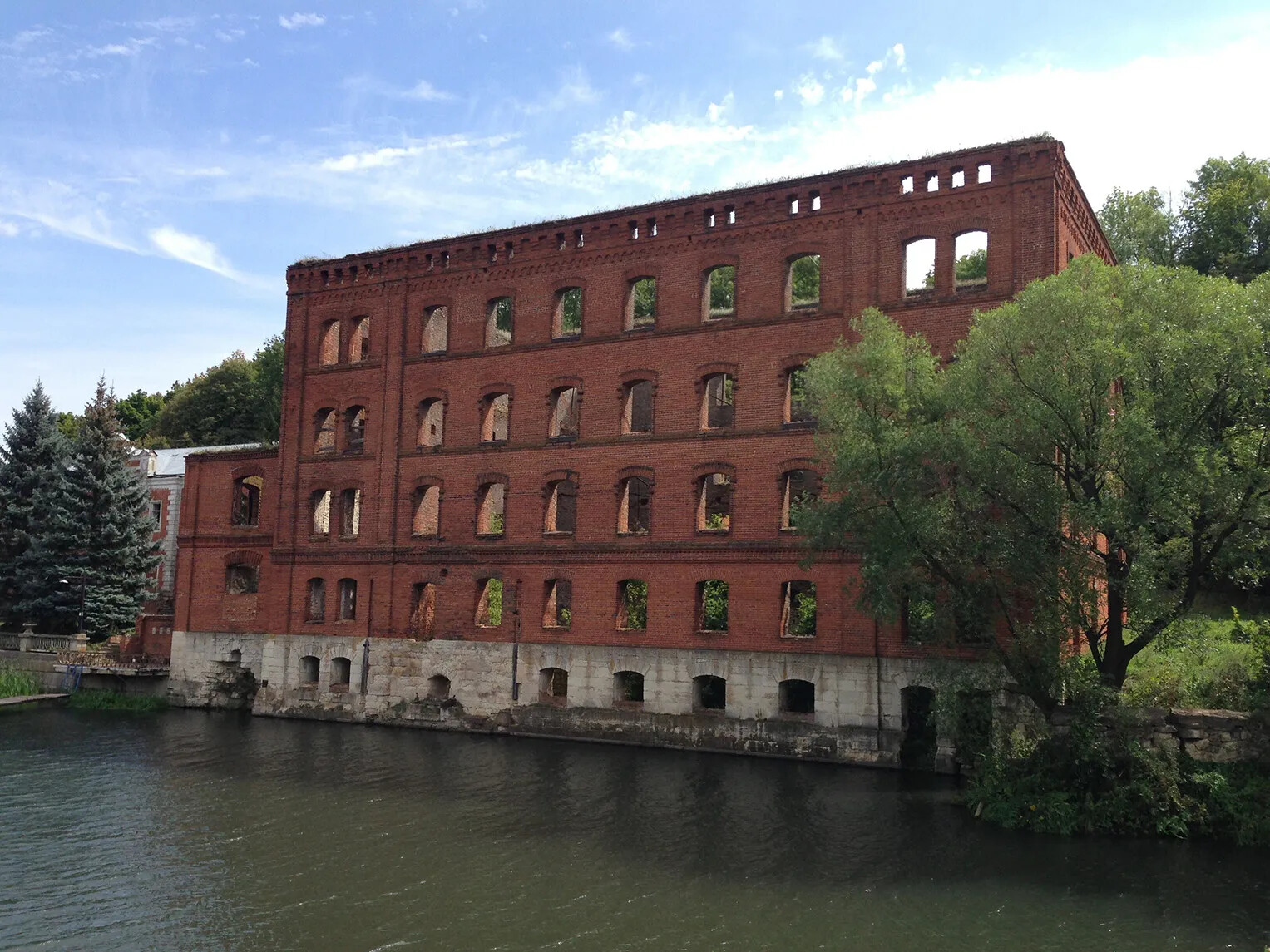
Caption:
Many factories in New Hampshire shut down in the middle of the 20th century, especially textile factories. Many people lost their jobs. Some mill buildings were left empty, and others were torn down.Caption:
Although New Hampshire had a long history of having mills and factories, the state’s economy began to change in the early 20th century. Most of the factories moved to the southern part of America, where people would work for less money. The factories in New Hampshire began to close, and people had to find other kinds of work. In 1936, New Hampshire’s largest factory, the Amoskeag Manufacturing Company, closed. The company had owned dozens of huge buildings in Manchester, which now stood empty. It was the end of an era. The New Hampshire economy had to find different types of businesses to offer jobs to the people of the state.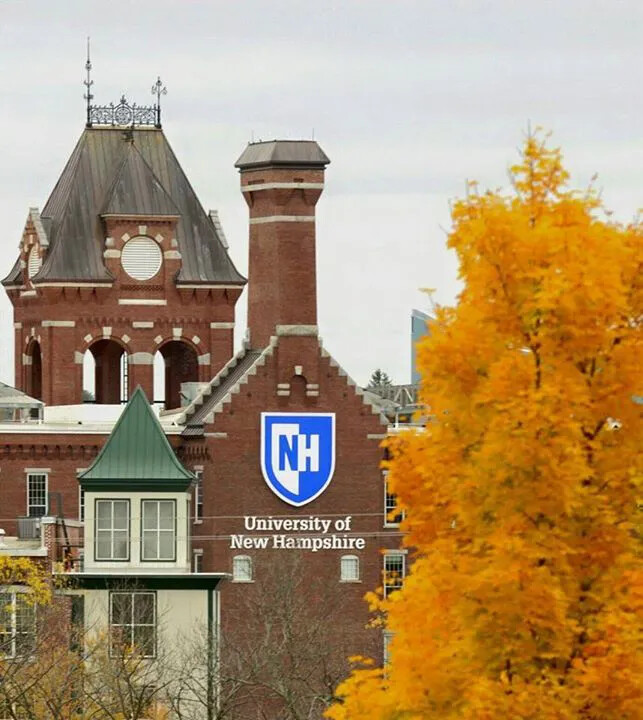
Caption:
Many factories in New Hampshire shut down in the middle of the 20th century. Near the end of the 20th century, though, people started to find new ways to use these brick mill buildings. Some became apartments, restaurants, or offices. This mill building was originally part of the Amoskeag Manufacturing Company. Later, it was the headquarters of Pandora Industries, which made sweaters. Now it is the University of New Hampshire's Manchester campus.Caption:
Although computers had been around since the 1940s, they could not communicate with one another until 1990. That’s the year that a British man named Tim Berners-Lee invented the internet, which is also called the world wide web. The internet is a way for computers to “talk” to one another. All computers are now linked to one another through the world wide web. This is how we send emails to one another, look up information, or buy things online. The internet completely changed the way people used computers.
In the final decades of the 20th century, though, people started to find new ways to use these massive brick buildings. Many of the old mills became office buildings for all sorts of professional people, like doctors, lawyers, accountants, and publishers. Some of these buildings became universities, like the University of New Hampshire at Manchester or Southern New Hampshire University. Other mill buildings became museums, shops, or restaurants. And some became apartment buildings or hotels.
New kinds of industries also moved into these old buildings, and many of these new industries were based on developing new technology.
Video Games
One new technology was the development of video games. In the late 1960s, a Manchester man named Ralph Baer came up with the idea of playing games on a television set. He invented a game system that he called the “Brown Box.” It was the first multiplayer video game system, and it offered several different games, like tennis, hockey, Simon Says, and math games.
When it was first sold to the public in 1972, it was described as a “TV game” because no one had come up with the term “video game” yet. The graphics were very basic compared to what we have today. In fact, the game came with transparent sheets that players taped over the tv screen to change the look of each game.
Baer’s idea was entirely new for its time. Personal computers hadn’t been invented yet. Neither had iPads or iPhones. People could watch tv, listen to the radio, or talk on the phone, but they couldn’t do much more with that technology. But with Baer’s video game, people could interact with technology for the first time. His invention started the video game craze that is still going on today.
Caption:
Ralph Baer is known as the “father of the video game.” He was born in Germany but moved with his family to the United States in 1938. The Baers were Jewish and emigrated to escape the Nazis, the group that controlled Germany at that time. The Nazis persecuted Jewish people and took away all of their rights. In America, Baer studied television engineering, which was a new field at the time. He served in World War II and later moved to Manchester and began working at an electronics company. In 1966 he had the idea to add games to television sets. He invented a game system that he called the “Brown Box.” It was the first multiplayer video game system. The “Brown Box” was later sold as the Magnavox Odyssey. It looked very basic compared to the games you play, but it launched the whole gaming craze that is still going on today. There is a statue of Ralph Baer in Manchester.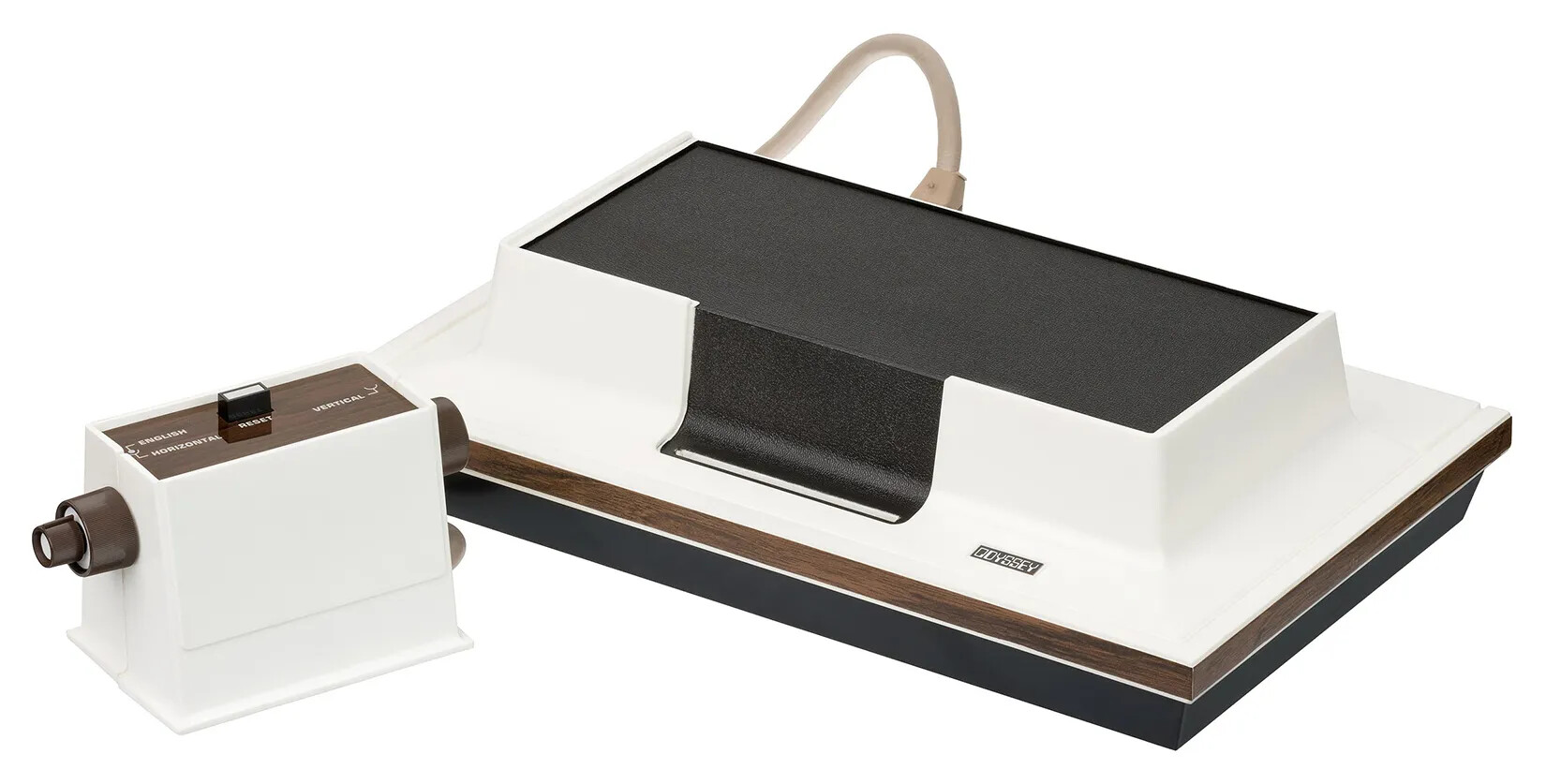
Caption:
The Magnavox Odyssey was the first multiplayer video game system. It was invented by an engineer from Manchester, New Hampshire, named Ralph Baer. It was first sold to the public in 1972. The Odyssey hooked up to a television and was very simple, with black-and-white graphics and no sound. But it started the video game craze that is still going on today!
Caption:
Many factories in New Hampshire shut down in the middle of the 20th century. Near the end of the 20th century, though, people started to find new ways to use these brick mill buildings. Some became apartments, restaurants, or offices. In the early 2000s, a company called Texas Instruments moved into a building that had been part of the Amoskeag Manufacturing Company. Texas Instruments makes all kinds of electronics, like calculators and computer chips, as well as educational toys like this Speak and Spell.Other Inventions
Video games weren't the only technology that became important to the New Hampshire economy. Lots of other computer companies opened offices and laboratories in old mill buildings around the state, focusing on developing things like calculators, satellites, or internet security.
One of New Hampshire’s most important modern inventors was Dean Kamen, who created a laboratory in one of the old mill buildings in Manchester. Kamen’s company is now called DEKA, and it specializes in finding new medical technologies to help doctors and nurses take better care of people. His company also explores transportation and finding new ways for people to get from one place to another.
Kamen’s most famous invention was the Segway. He launched it in 2001 as a way for people to get around cities more easily. Many cities had mass transportation systems, which included things like busses and subways. Mass transportation allows many people to move around a city at the same time, but it has set routes it has to follow. People might need to get to places that the subway or the bus doesn’t go to. A Segway is a personal transportation system. Only one person at a time rides a Segway, but people can take it exactly where they need to go.
Kamen hoped that it would revolutionize transportation in cities around the world. There was a lot of excitement when he introduced it on national television, and many people use Segways. In some cities, like Paris, people can even take a group tour with everyone riding on their own Segway! But the Segway hasn’t replaced mass transportation systems.
Caption:
Dean Kamen is an inventor, engineer, and businessman from New Hampshire. He is best known for inventing the Segway, but he has invented a lot of other things too, especially in the medical field. In the 1980s Kamen bought up some of the empty buildings in the Manchester Millyard and used them for laboratory and office space for his company, DEKA. This brought other companies into the Millyard and helped improve the neighborhood. Kamen launched the Segway, a personal transportation device, in 2001. He also invented an all-terrain electric wheelchair called the iBOT, a portable system to purify water, a machine to help people with kidney problems, and a special type of prosthetic, or artificial, arm. Kamen is also one of the founders of the FIRST (For Inspiration and Recognition of Science and Technology) Robotics Competition, which is in schools all over the country. Have you ever participated in a FIRST Lego League Challenge or Robotics Competition?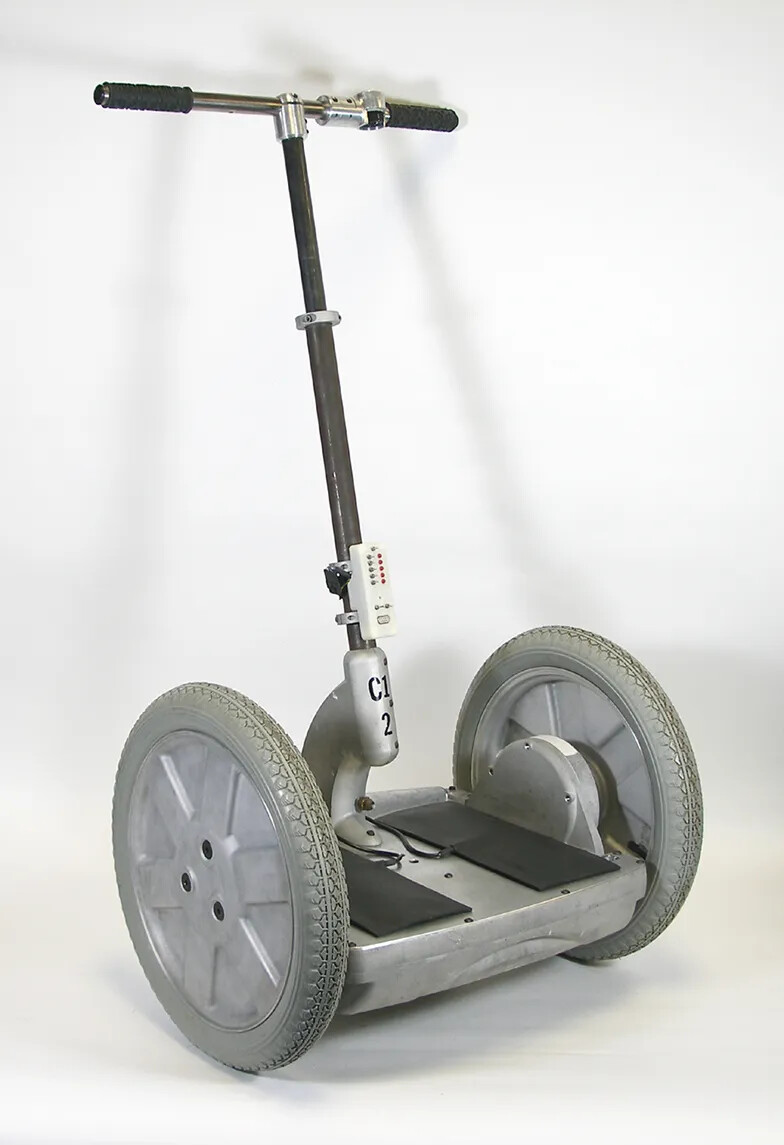
Caption:
The Segway is a kind of personal transporter that was created by Dean Kamen, a New Hampshire inventor, engineer, and businessman. His company, DEKA, is located in the Manchester Millyard. It is an example of how technology companies are using the old mill buildings. The Segway was designed to help people move around cities more easily.Caption:
Although New Hampshire faced hard times after most of the mills and factories in the state closed in the early part of the 20th century, new businesses began to emerge in the state by the end of the 1900s. Many of these businesses focused on new technology, like video games and computers. One New Hampshire inventor named Dean Kamen came up with a whole new way to get around: the Segway Personal Transporter. When the Segway was unveiled to the world in 2001, many people thought it would change the way people traveled, particularly in cities. Instead of walking or driving around a city, people would ride a Segway. The Segway never became as popular as Kamen hoped, but they are still used in many major cities around the world. Some companies even offer Segway tours, when whole groups of people riding Segways travel around cities together learning about history and culture and seeing the sights.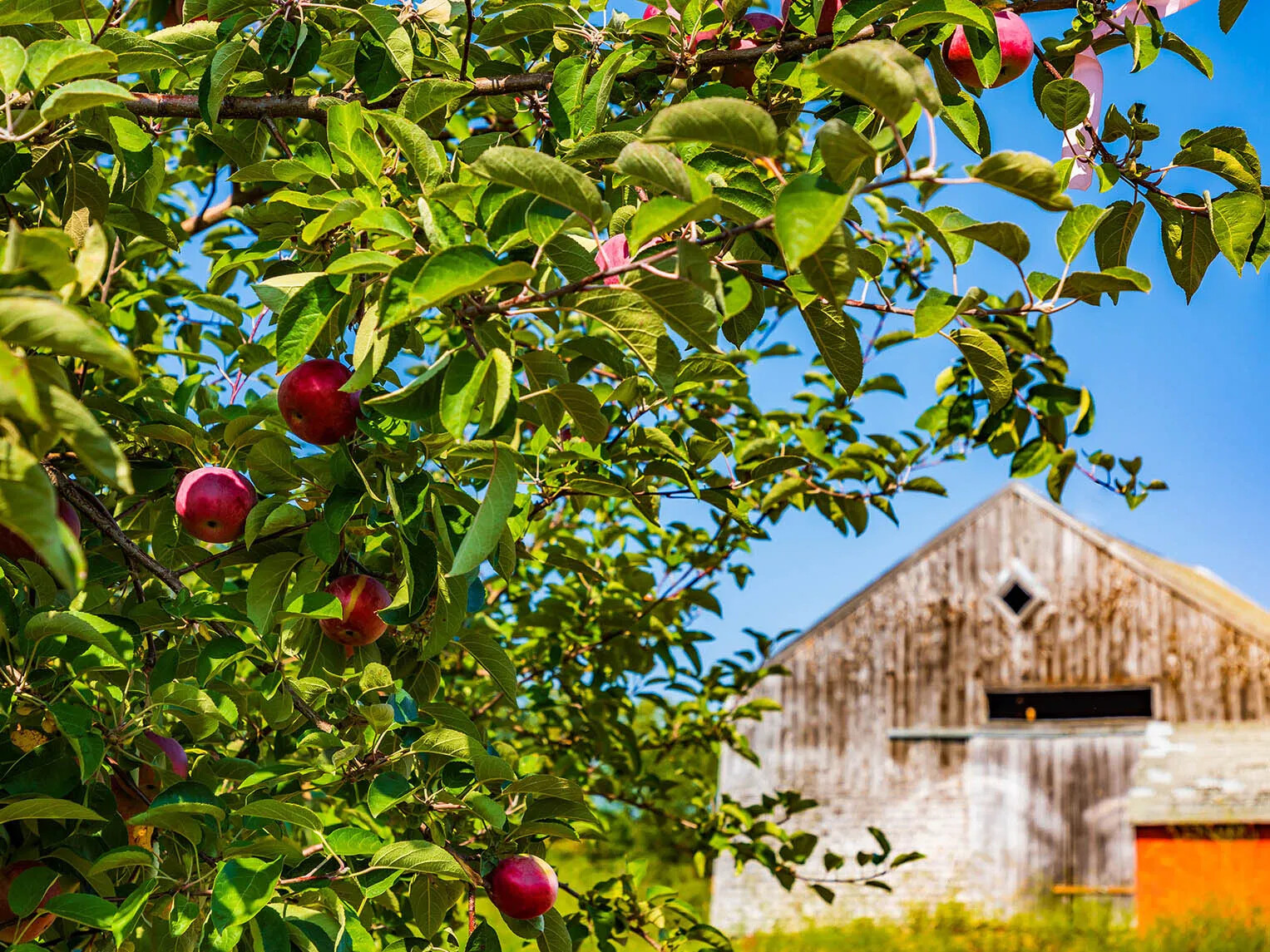
Caption:
Most English settlers in New Hampshire had to farm to produce their own food. If they had extra crops, they traded them with other people for the things they couldn't produce themselves.Traditional Industries
How have New Hampshire’s traditional industries changed in the modern era?
In addition to new industries, New Hampshire's economy also still relies on traditional industries, like tourism and farming. Even these traditional industries have had to change with the times, though, and Granite Staters have adapted their businesses for modern consumers.
Tourism
New Hampshire’s tourist industry also went through a lot of changes in the 20th century, mainly because of the invention of cars. Before cars became popular in the early 20th century, New Hampshire tourists traveled mostly by train. They could only visit the places they could reach by train. It was very difficult for tourists to get to other parts of New Hampshire.
Once tourists started traveling by car, though, they could go anywhere there was a road. That meant tourism became an important industry all over the state, not just to a few popular tourist destinations. In towns all over the state, Granite Staters built businesses for the tourists—things like roadside motels, campgrounds, and restaurants. They also opened new tourist attractions for visitors so there were more things to do and see, like water parks, ziplining, and even helicopter tours.
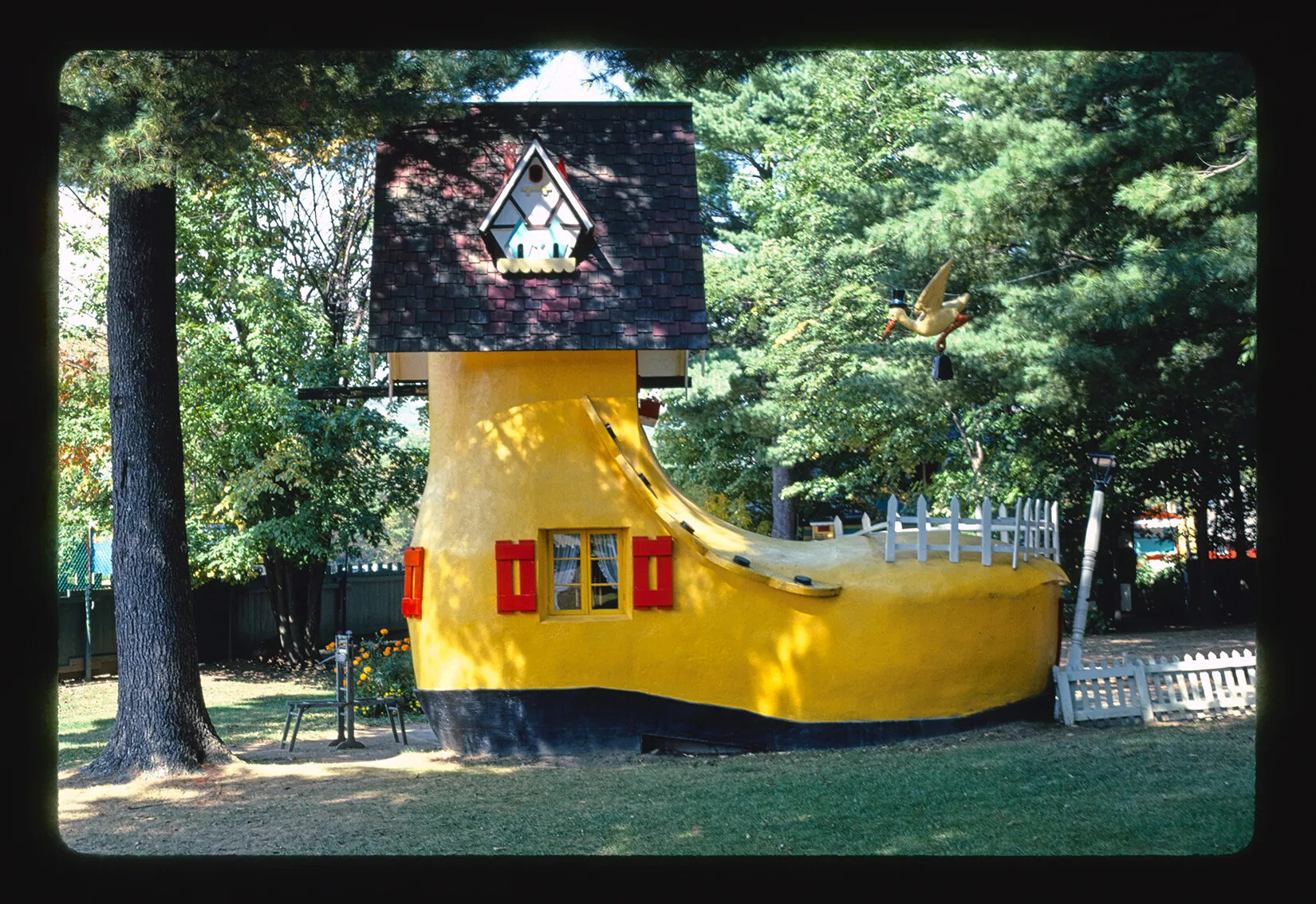
Caption:
Tourism has been an important part of New Hampshire's economy since the 1820s. Tourism changed a lot in the 20th century, especially after cars became popular. Granite Staters built all sorts of businesses for tourists, like roadside motels, campgrounds, and amusement parks. Story Land opened in Glen, New Hampshire, in 1954.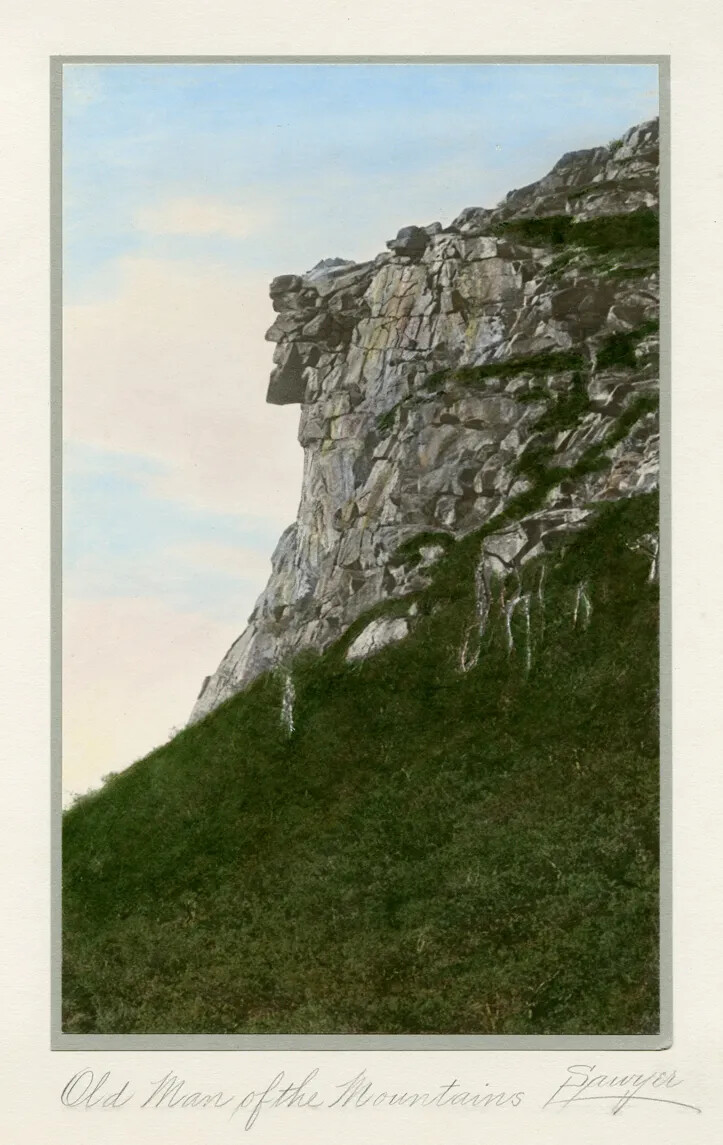
Caption:
The Old Man of the Mountain was an important New Hampshire landmark. It was a series of five layers of granite that looked like the profile, or side, of a man's face. It became well-known starting in the 1930s and people came from all over the country to see it. It became a symbol of New Hampshire. Unfortunately the granite that made up the Old Man fell to the ground in 2003.But tourists still love the classic New Hampshire sites, like the Flume Gorge and the Mount Washington Cog Railway. The state lost its most iconic tourist attraction in the first years of the 21st century, though. The Old Man of the Mountain in Franconia Notch was a symbol of New Hampshire, but for years the rock formation that made the Old Man had been slipping. Sometime during the night of May 2–3, 2003, the rocks slipped down the mountainside. When people woke up on May 3, the Old Man was gone. Many people still visit Franconia Notch to see where the Old Man used to be.
Caption:
The Old Man of the Mountain has been one of New Hampshire’s most popular tourist destinations since the 1800s. By the early 1900s, though, there were signs that the Old Man wasn’t as stable as he should be. In the 1920s, scientists installed a series of steel rods and clamps to keep the Old Man in place. These worked well for many decades. Unfortunately, on the morning of May 3, 2003, people awoke to find that the Old Man was gone! The rocks that made up his face slipped off of the side of the mountain overnight. Many of the people in New Hampshire mourned the Old Man’s loss. Now there is a park where people can stop and see where the Old Man once stood. The park has even found a way to duplicate how the Old Man once looked on the side of his mountain. The Old Man remains one of the most popular symbols of New Hampshire.

Caption:
One way that tourism changed in New Hampshire in the 20th and 21st centuries is that tourists visit year-round. In the winter, many tourists visit New Hampshire to ski. This skiier is enjoying the trails at the Mount Prospect Ski Tow in Lancaster, New Hampshire.Throughout the 20th century and into the 21st century, tourism remained one of New Hampshire’s most important industries. In the modern era, about 3.5 million people come to New Hampshire every year on vacation. Most of them are from the New England region or the eastern United States, but more and more tourists from other countries are starting to visit New Hampshire in recent years.
The tourist season also changed. In the 19th century, most tourists came to New Hampshire in the summer, but nowadays, tourists come all year round. In the winter, they come for winter sports, like skiing and snowmobiling. In the summer they come to hike, swim, boat, fish, and enjoy the state’s natural beauty. In the fall, they come to see the color of the leaves change in the state’s forests and participate in fall activities like picking pumpkins and apples or going through corn mazes. They even come in spring to do things like maple sugaring.
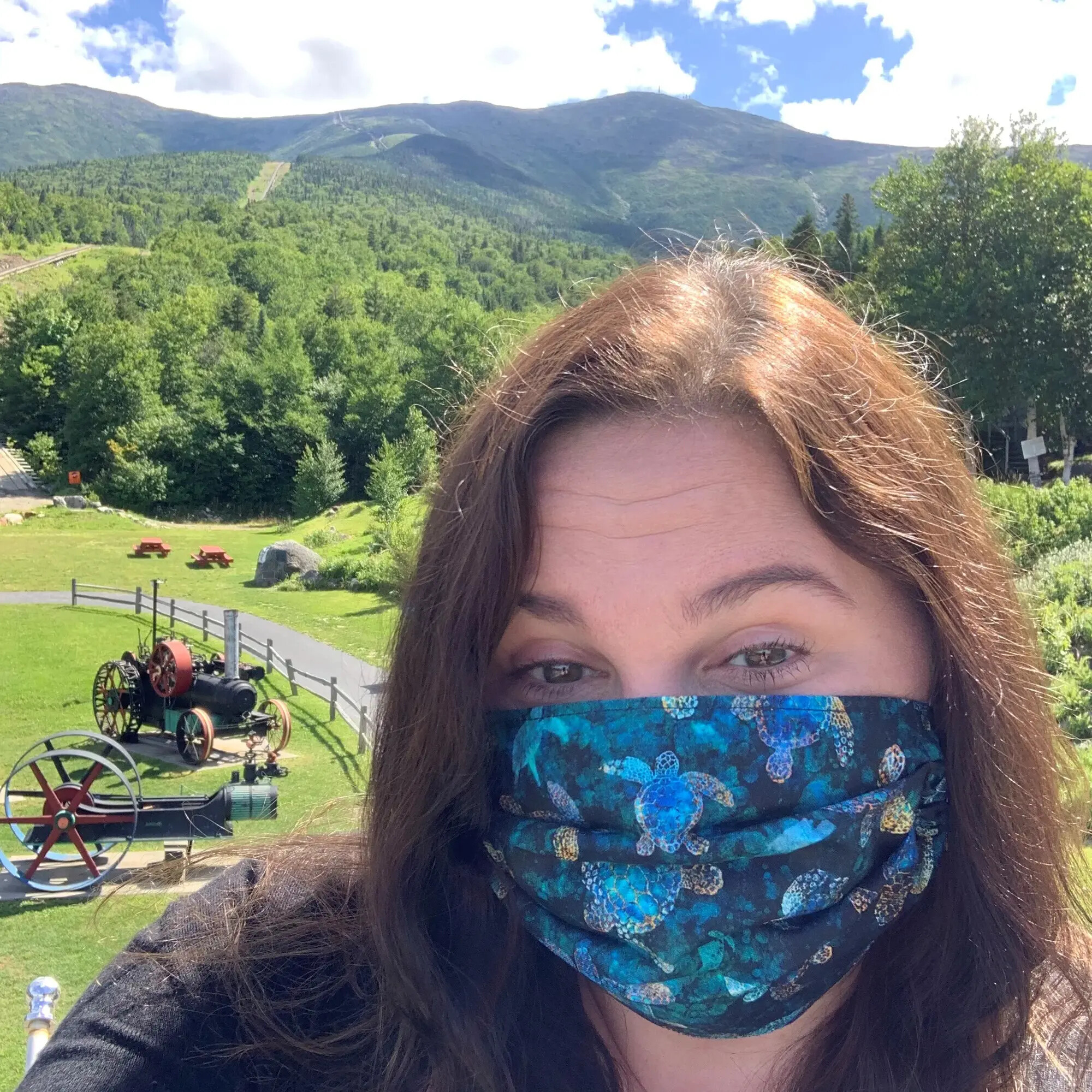
Caption:
Tourism is a very important part of New Hampshire's economy today. During the covid-19 lockdowns, people couldn't travel, so tourism was hit hard. Many Granite Staters took "staycations" instead, where they enjoyed local sites. This person is visiting the Mount Washington Cog Railway. Once the vaccine became available, more people could travel again, so the tourist industry recovered.The state's tourism industry was hit hard by the COVID-19 pandemic in 2020 since people couldn't travel during the lockdowns. Many Granite Staters became tourists in their own state once the lockdowns started to lift, though. And once the vaccine became available, people throughout much of the world started traveling again, which allowed New Hampshire's tourist industry to recover.
Farming
Most people in New Hampshire once lived on farms, but farming started to decline in the late 19th century and the 20th century. Farmers in New Hampshire used to supply agricultural products to big cities like Boston, New York, and Philadelphia. Most of these products were things that would go bad if they weren’t used quickly, like dairy products and fruits and vegetables. Since New Hampshire wasn’t that far from these places by train, Granite State farms could provide the products people needed in these eastern cities.
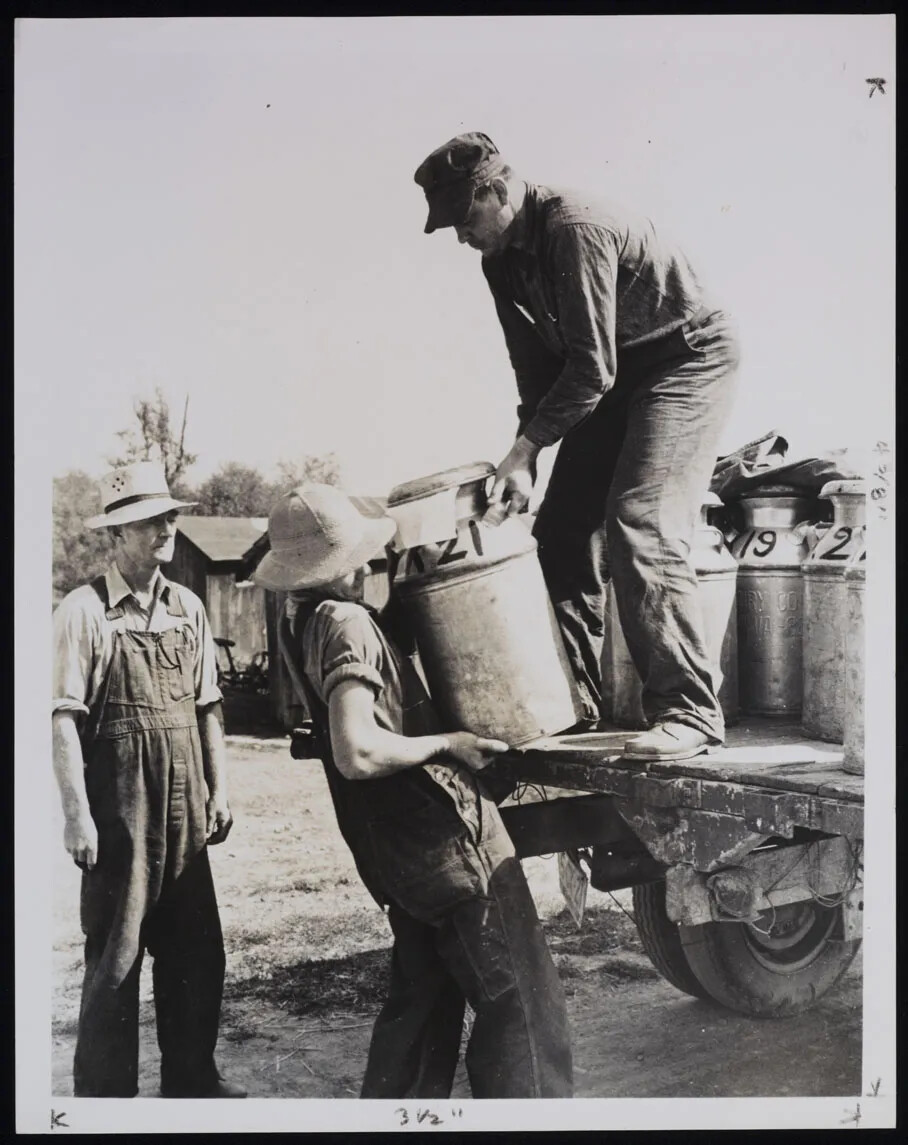
Caption:
After 1850, railroads could bring food from the rich farmland of the Midwest to New England. It was cheaper to do that than for New England farmers to grow food themselves. Many New Hampshire farmers moved to cities or to the Midwest or the west coast. Others shifted from growing grain to focus on other products, especially dairy. Dairy farming continues to be an important part of New Hampshire's economy today.
Caption:
Before refrigerators and freezers were invented, people harvested ice from New Hampshire's lakes and ponds and stored it year-round to keep their food cold. This is from a series of photos of an ice harvest in Coos County.By the middle of the 20th century, though, refrigeration had changed all that. Refrigerated train cars and refrigerated ships meant that these products could be kept fresh for a lot longer and could be brought in from places much farther away, where they could be produced at less cost. Grocery stores and restaurants started buying lots of their food from other countries instead of buying it from New Hampshire farms.
Refrigeration also changed how people stored food in their homes. Before refrigerators were invented, New Hampshire farmers sold blocks of ice throughout the Northeast to people who used the ice to keep their food cold. The blocks of ice had to be replaced once they melted, which meant people always needed more ice. Refrigerators, though, worked on electricity. People could plug them in, and they would keep their food cold all the time. No one needed ice from New Hampshire anymore.
All of these changes made it very difficult for New Hampshire farms to stay in business. Many farmers stopped producing agricultural products and got jobs in cities instead. Every year, there were fewer New Hampshire farms.
In the late 20th century, though, that started to change. Farmers began to find new ways to sell their products and make their farms profitable. At the same time that farmers started to change the way they sold things, the public became more interested in buying food that came straight from the farms. They wanted their food to be fresh instead of shipped in from somewhere far away.
Many people also wanted farms to grow food with fewer chemicals like pesticides. Food produced without chemicals is called organic. Although you can buy organic food in grocery stores, many people like to buy it straight from the farm.
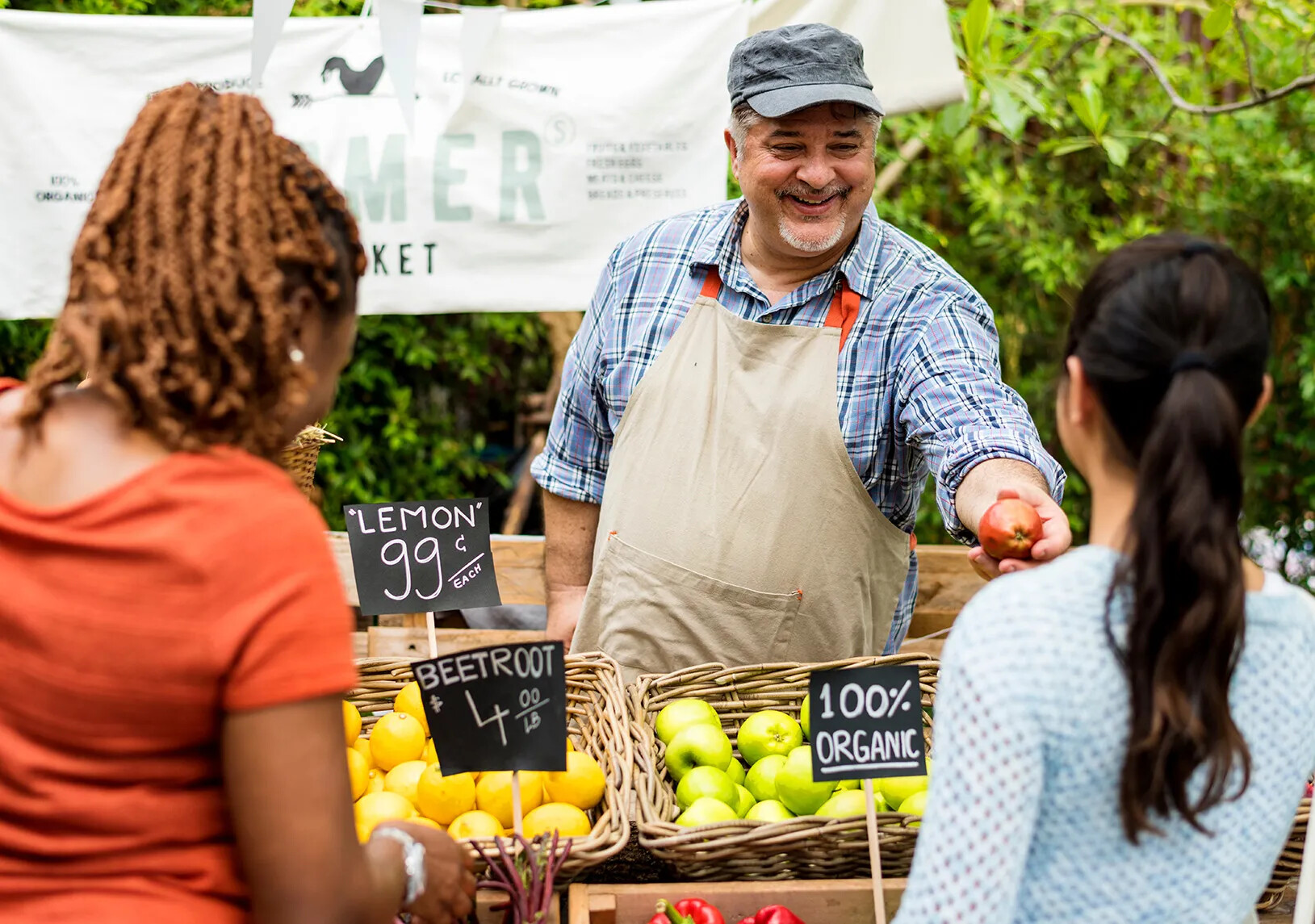
Caption:
Although the middle of the 20th century was difficult for farmers in New Hampshire, farming made a comeback starting in the late 20th century. More and more people wanted to buy their produce directly from the farmers, instead of at the store. More and more people also wanted to eat produce grown with fewer chemicals, like pesticides.
Caption:
In community supported agriculture (CSA), people buy a share of a farm, and then the farmer supplies them with the products made on the farm during the growing season, usually vegetables. This allows people to buy their food directly from a farmer, and it gives the farmer funding in advance to buy seeds and equipment. Today, there are about 36 CSAs in New Hampshire.One way that farmers started connecting directly with their customers was through farmers markets, which became very popular in the early 21st century. Many towns have farmers markets today, where people can go and buy agricultural products from the farmers themselves. At farmers markets, people can buy vegetables, fruit, honey, cheese, bread, and even crafts.
The same idea of connecting people directly to the farmers is behind the development of community supported agriculture, which are known as CSAs. In a CSA, people buy a share of a farm, and then the farmer supplies them with the products made on the farm during the growing season, usually vegetables.
Many restaurants also offer food that comes directly from New Hampshire farms, which is called farm-to-table. Instead of buying their fruits and vegetables from a market, farm-to-table restaurants work with farmers to produce the food they need for their customers.
Granite Staters also like to go to farms to get their food themselves, and many farms now offer U-pick. U-pick means that people pick their food for themselves, usually fruits like apples and berries. In fact, some farms offer entertainment along with U-pick, like hayrides, ice cream, and concerts.
Farming has become more popular in New Hampshire in the 21st century, helping many New Hampshire farms stay in the same families they have been in for generations. Other farm families are new to agriculture but see farming as a way to live a more family-centered life. This traditional New Hampshire industry has been reinvented for the modern era.

Caption:
Farming became popular in New Hampshire again in the late 20th and early 21st centuries. People became interested in buying their food directly from farms. Restaurants started to include more and more local food on their menus. And lots of people, both residents and tourists, started visiting farms to pick their own strawberries, blueberries, and apples. Have you ever gone to a pick-your-own farm?Main Streets
There has also been a lot of interest in keeping the downtown areas of New Hampshire towns as busy, active places, full of shops and restaurants located in historic buildings. Many people believe that these local downtowns help people feel connected to their town or community.
These downtown areas are also known as Main Streets, which is a part of town where most of the businesses are located. In the late 20th century, many Main Street areas struggled to keep businesses there because so many people started doing their shopping at big, centralized shopping malls, which were usually built away from the downtown area and on the outskirts of communities.
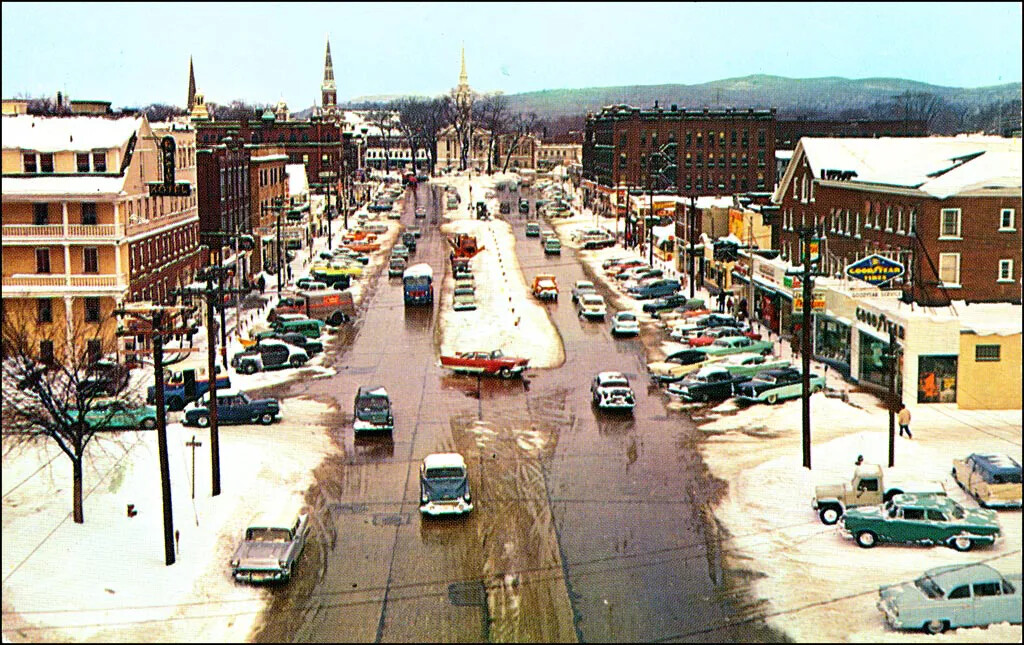
Caption:
Many towns have a Main Street where most of the shops, banks, restaurants, and other businesses are located. This postcard shows Main Street in Keene, New Hampshire, in the winter. In the late 20th century, a lot of these downtown areas had trouble keeping businesses because large shopping malls drew customers away.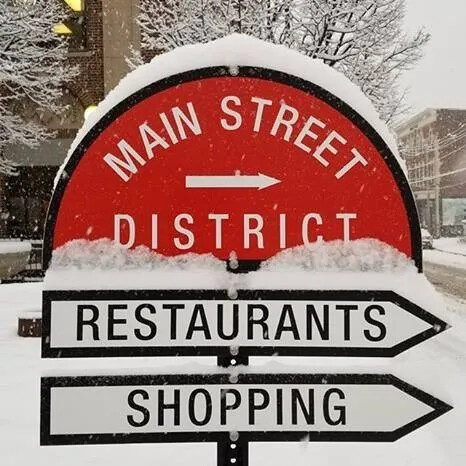
Caption:
In the 1990s, Main Street programs were created to help support downtown communities. These programs helped to fix up historic buildings and bring businesses back to downtowns. Today there are 19 Main Street programs in New Hampshire, including in Berlin. These programs organize community events, help keep downtowns looking nice, and encourage people to shop at local businesses.In the early 21st century, Main Streets started to become more popular in New Hampshire again. The idea started as a national effort. The National Trust for Historic Preservation suggested that states create Main Street organizations to support local communities in protecting their historic buildings and promoting busy, prosperous downtown areas.
Many states agreed, including New Hampshire, which formed a group to support Main Street communities in 1996. A town that wanted to support its Main Street could apply to the state organization to become a Main Street community, which allowed them to get grants to fix up the buildings and support the businesses. Government and business leaders in these towns promised to do what they could to save their towns’ historic buildings and bring businesses back to the Main Street areas.
The first three Main Street communities in New Hampshire were named in 1997: Littleton, Milford, and Lancaster. Today, there are 19 Main Street communities in the state. They often organize community festivals like Jaffrey’s Scarecrows on the Common event or Market Days in Concord. These types of activities support local businesses and bring the whole community together for fun and entertainment.
Many other towns are not official Main Street communities but have made an investment in supporting their Main Street areas. Usually these communities have an organization where volunteers work together to hold events that bring people downtown, like the Keene Pumpkin Festival. Many of these groups organize Old Home Days celebrations, like the ones that were popular back in the early 1900s.
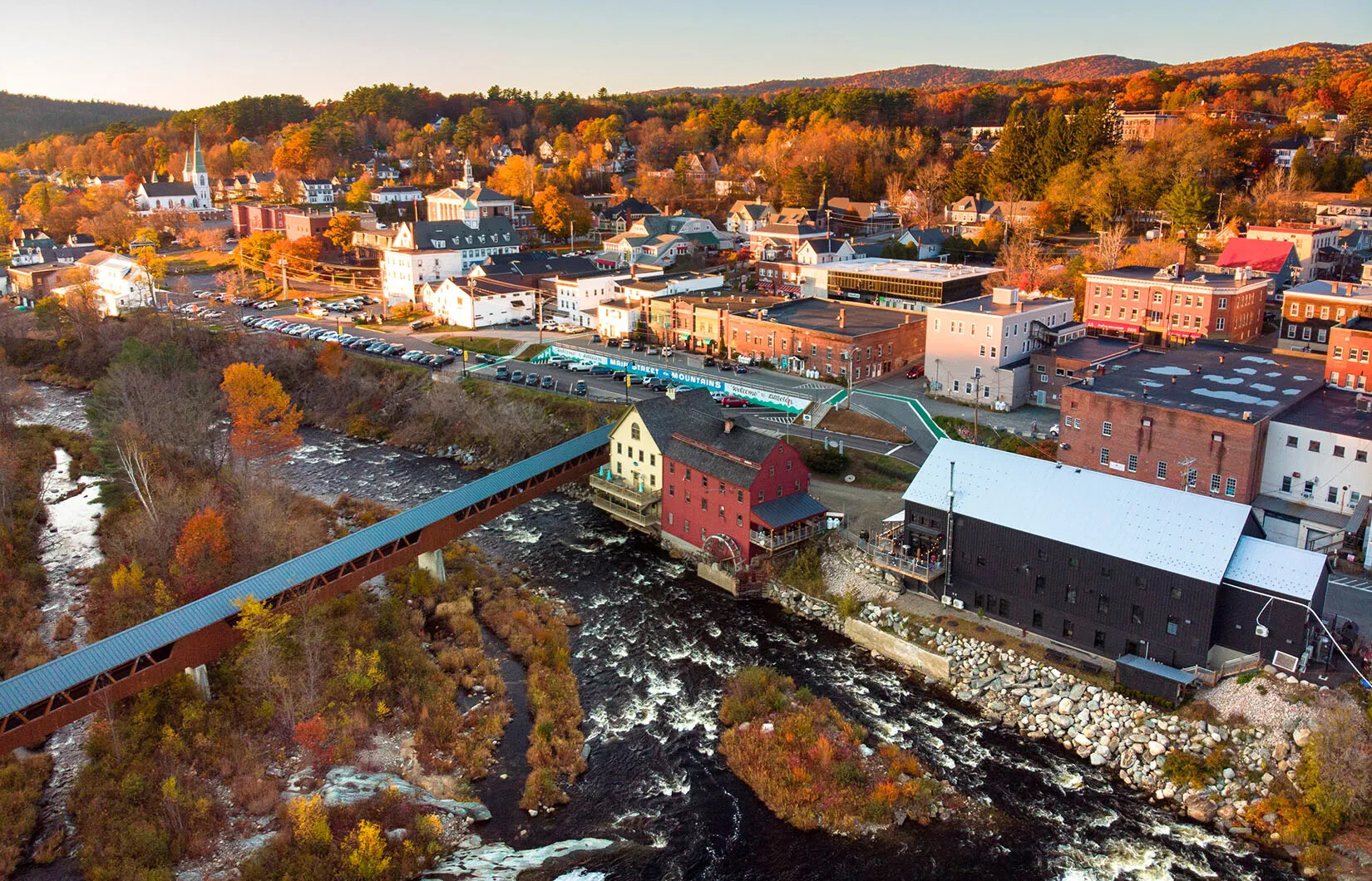
Caption:
Littleton was one of the first three Main Street communities in New Hampshire. Main Street programs were created to help support downtown communities. These programs helped to fix up historic buildings and bring businesses back to downtowns.Let's Review!
What are the big ideas in this section?
Old and New Economies
After many of the factories in the state closed in the early 20th century, Granite Staters had to find new industries to keep the state's economy going. Other traditional industries, like tourism, have remained important to New Hampshire.
Tech Industry
Granite Staters found new industries to fill the old factory buildings around the state. They also created new products, like video games, that replied on developing technology.
Farming
Although farmers struggled in the middle of the 20th century, many agricultural businesses are doing well today, mainly because people have become more interested in buying food that is fresh directly from the farmers themselves.
Main Streets
The 21st century has brought new interest in supporting local businesses and Main Street communities that sell things made right here in the Granite State. This trend has brought new life to many NH towns.
Politics and Government
How are New Hampshire’s politics and government different today from what they were in the past?
Government. New Hampshire’s system of government is the same today as it was when New Hampshire became a state in the 18th century.
The towns play a very important role in this structure of government. Each town in the state makes decisions about how the town and schools will be run and how much people will pay in taxes to support those services. The town meeting, which is held in each town in March, is the voters’ opportunity to choose their representatives for local government and decide on the town’s budget for the coming year. Granite Staters don’t always pay attention to their town elections, but a lot of important decisions are made at that annual meeting.
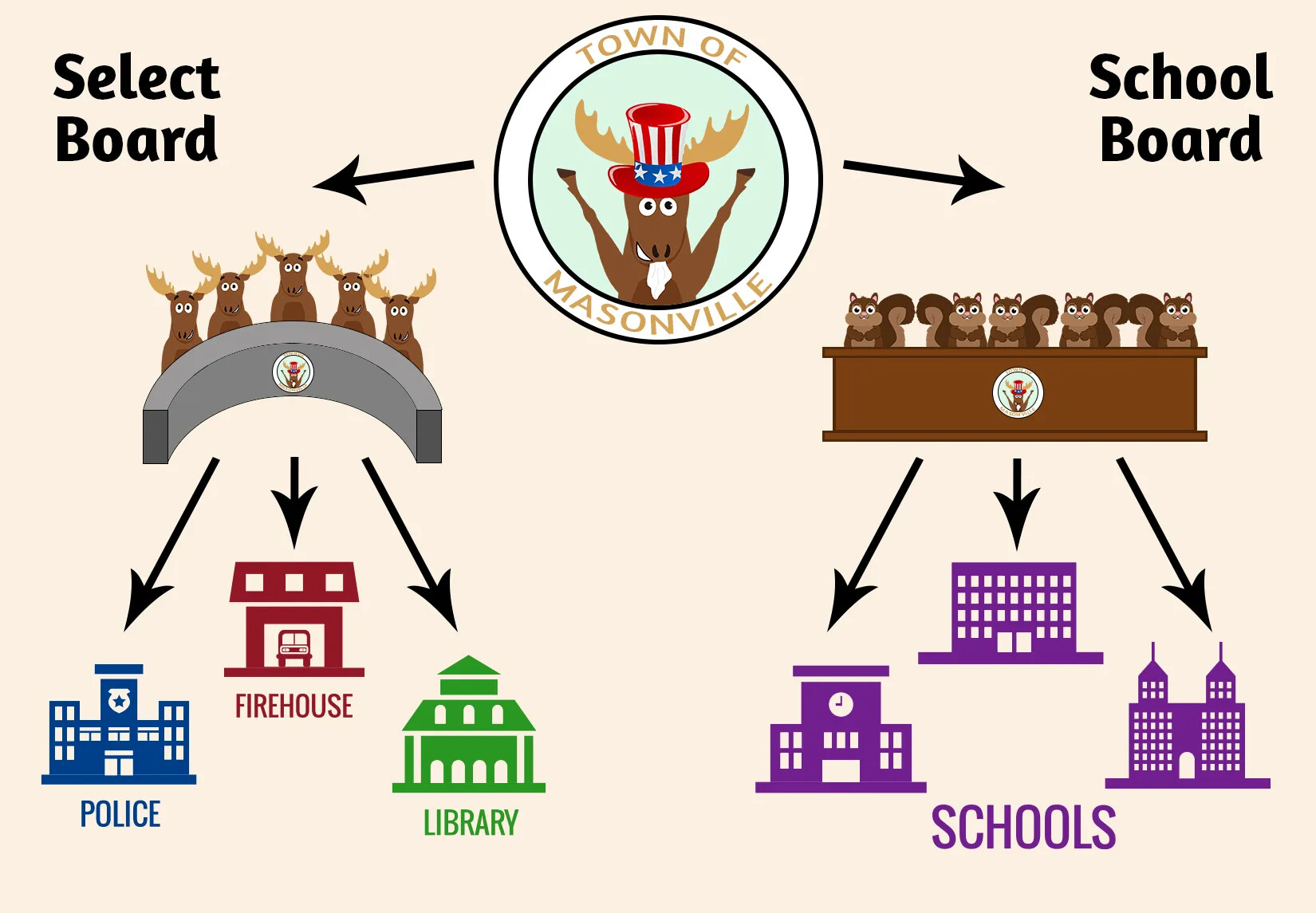
Caption:
New Hampshire has 221 towns. Town government is divided into two parts: the town and the school. Town government is led by an elected select board or town council. The select board oversees the town departments, such as the police, fire, and parks and recreation. The school side of town government is overseen by the school board. School board members are also elected by the people in the town. The school board works with the superintendent of the school district to make decisions about how the town’s schools should be run.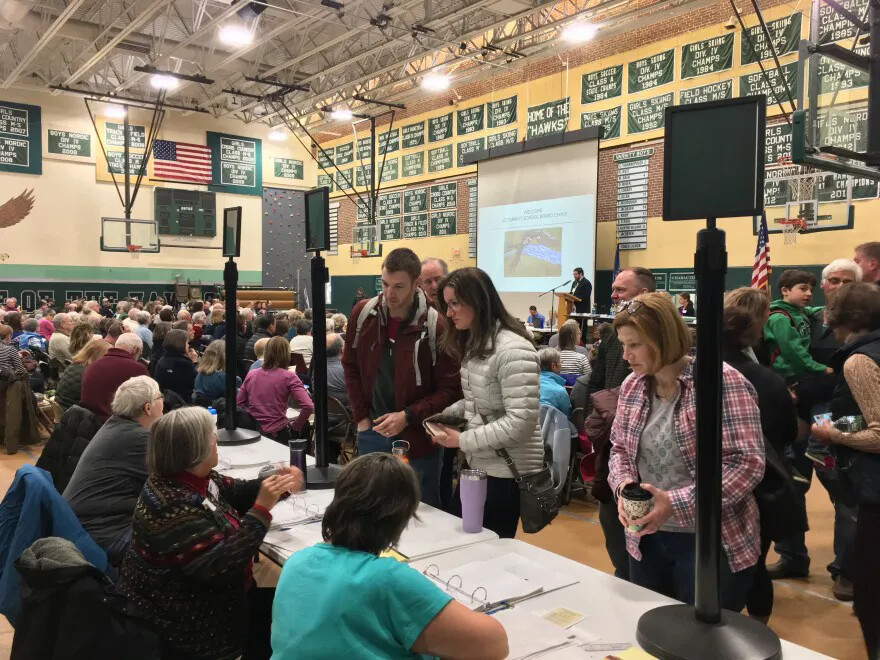
Caption:
At least once a year, each New Hampshire town is required to hold what is called a town meeting, when all of the voters in the town can come together and discuss the issues they will vote on. People vote at the town meeting in an exercise of direct democracy. This is a photo of a town meeting in Hopkinton, NH.In the past, all the townspeople came together for town meeting and voted, usually by raising their hand or writing their vote on a piece of paper. Since the 1990s, some town meetings have changed this practice. They hold a meeting where townspeople can come together and discuss the things they are voting on, which is called a deliberative session. But people actually vote on a different day by going to a polling place and filling out a ballot.
To learn about New Hampshire's system of government, go to Unit 18: Civics and Government. That unit explains how the federal, state, and local governments work together and what role citizens play in American democracy.
Politics. Although our system of government hasn't changed much over the years, New Hampshire’s politics have changed a lot in the 21st century. Politics is the way people work together in the government. Like-minded people usually come together to form a political party that works for what they want the government to do.
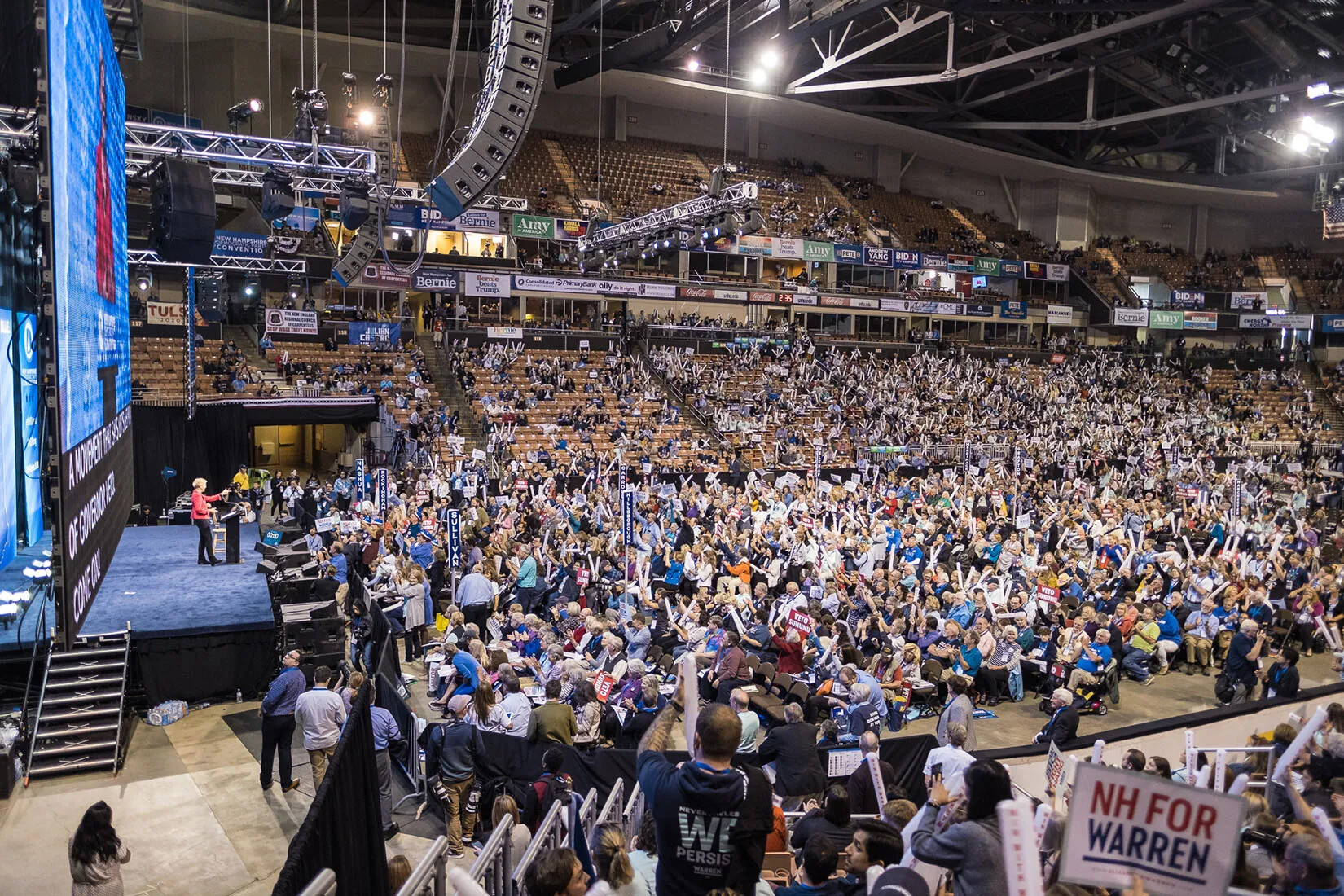
Caption:
A political party is formed when like-minded people come together in a group to work for what they want the government to do. Parties hold a conventions, or big meetings. At the conventions, the party members vote to decide who their leaders will be and what ideas and policies they will support. This is a photo of the New Hampshire's Democratic convention in 2019.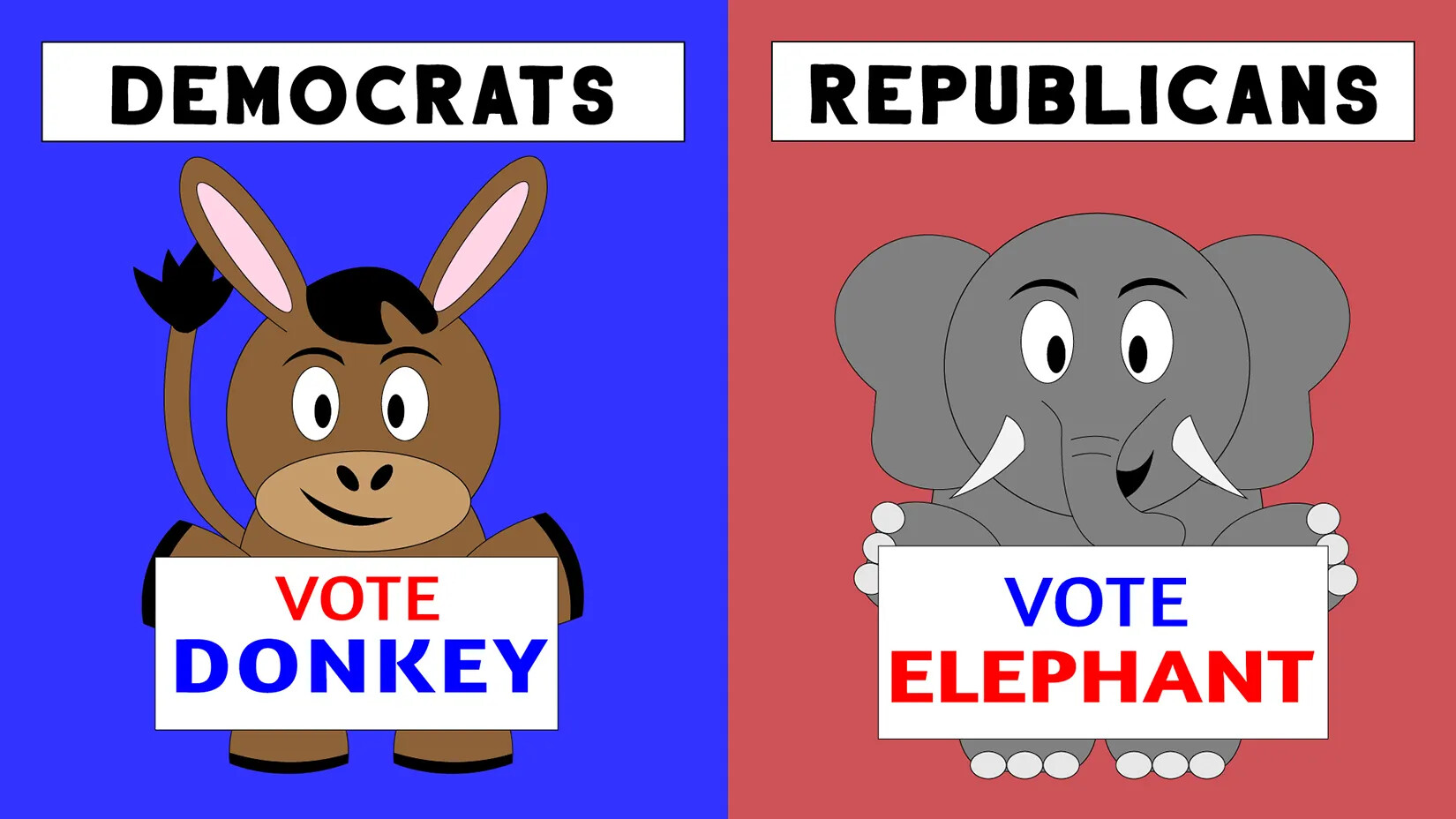
Caption:
Political parties are a way for people who agree with one another to work together to support each other. By working together, they have a better chance to get other politicians elected who also share their beliefs. Political parties in the United States have changed and shifted over the years. Since 1860, the two major American political parties have been the Democratic party and the Republican party.In the United States, there are two major political parties: the Democratic Party and the Republican Party. For much of the 19th century and the 20th century, most Granite Staters supported the Republican Party. They almost always voted for a Republican as president, for governor, and for representatives in the U.S. Congress and in the state government. The official color of the Republican Party is red, so for a long time New Hampshire was known politically as a red state.
Beginning in the late 1990s, though, many Granite Staters started supporting the Democratic Party and voting for Democratic candidates. The official color of the Democratic Party is blue, so when a majority of voters supported Democratic candidates, New Hampshire would be known politically as a blue state.
But because recent voters have changed their minds from one election to another about which political party to support, New Hampshire is now known as a swing state. In one election it could swing to one party, and in the next election it could swing to the other party. The state swings so much politically that now it is known as a purple state, because purple is the color you get when you mix red and blue together.
One reason that New Hampshire is a swing state is because so many voters here don’t really support either political party. Those voters are politically independent. Sometimes they vote for Republicans; sometimes they vote for Democrats. In fact, there are more independents in New Hampshire than there are Republicans or Democrats.
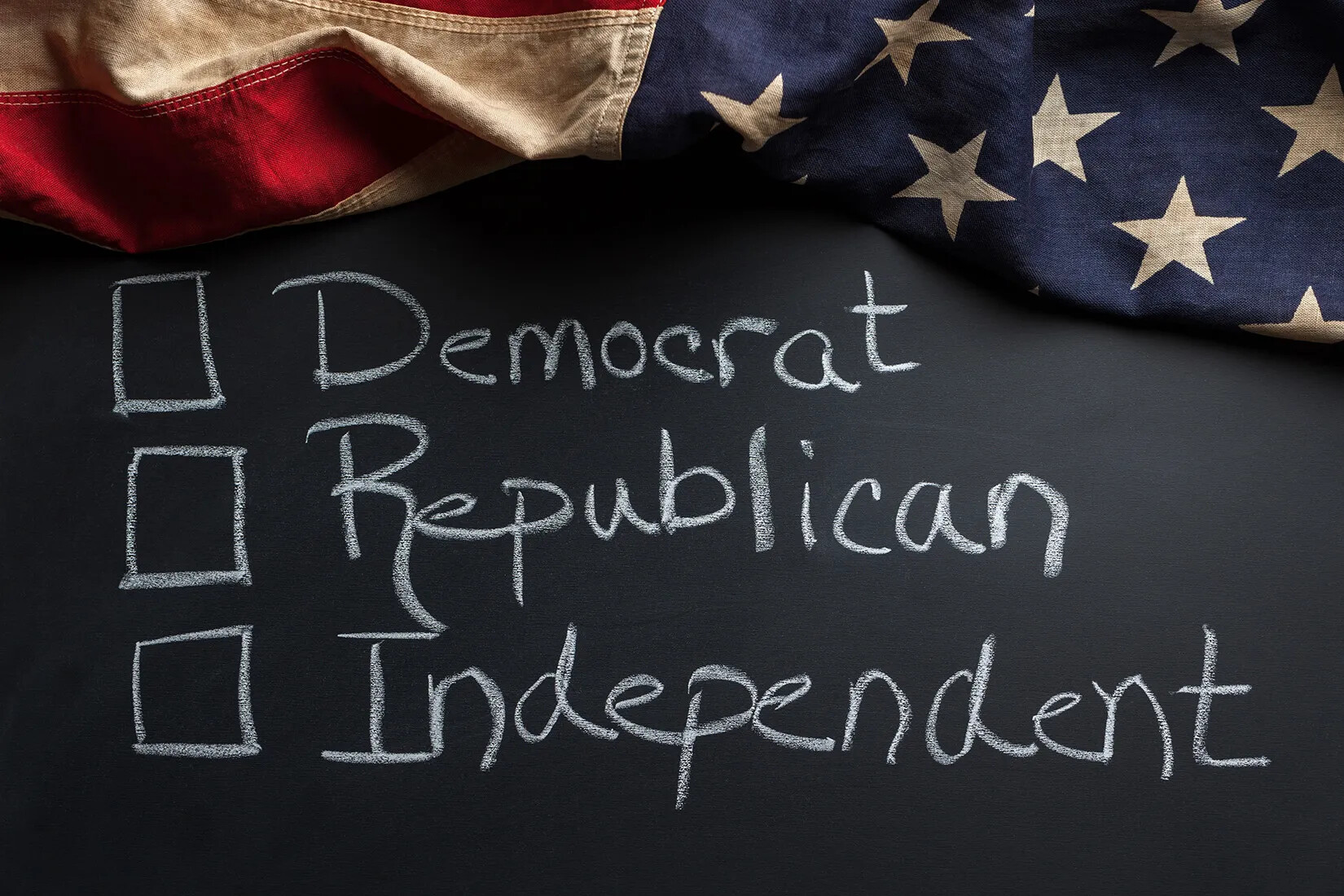
Caption:
New Hampshire is known for having a lot of independent voters. These are voters who don't officially belong to either political party. Sometimes they vote for Republicans; sometimes they vote for Democrats.
Caption:
In recent years, Granite Staters have become more polarized, which means Democrats and Republicans are less willing to work together to solve our problems. Instead, they spend their time fighting with one another. This polarization is happening all over the country, not just in New Hampshire.In recent years, Granite Staters have become more polarized, which means Democrats and Republicans are less willing to work together to solve our problems. Instead, they spend their time fighting with one another. This polarization is happening all over the country, not just in New Hampshire, but when people are too busy arguing with one another, they keep the government from getting very much done.
Women in Government
In the late 20th century and early 21st century, New Hampshire voters have elected women to some important positions in the state government and the federal government. In fact, New Hampshire has led the nation in some important political firsts.
In 1996, voters elected Jeanne Shaheen as governor of the state. She was New Hampshire’s first woman governor. She served as governor until 2002. A few years later, Granite Staters elected her to represent them in the U.S. Senate. She was the first woman in America to be elected to be both a governor and a senator.
Caption:
Jeanne Shaheen is the first woman elected governor of New Hampshire, the first woman elected U.S. Senator from New Hampshire, and the first woman in American history to be elected both a governor and a U.S. Senator. She was born in Missouri but moved to New Hampshire in 1973. She ran a small business and taught at Dover High School. Shaheen became active in politics, especially the New Hampshire primary. In 1990 she was elected to the New Hampshire Senate, and in 1996 she was elected governor. After serving three terms as governor, Shaheen ran for U.S. Senate in 2002, but she lost that election. She tried again in 2008, and that time she won. She was reelected to the Senate in 2014 and 2020.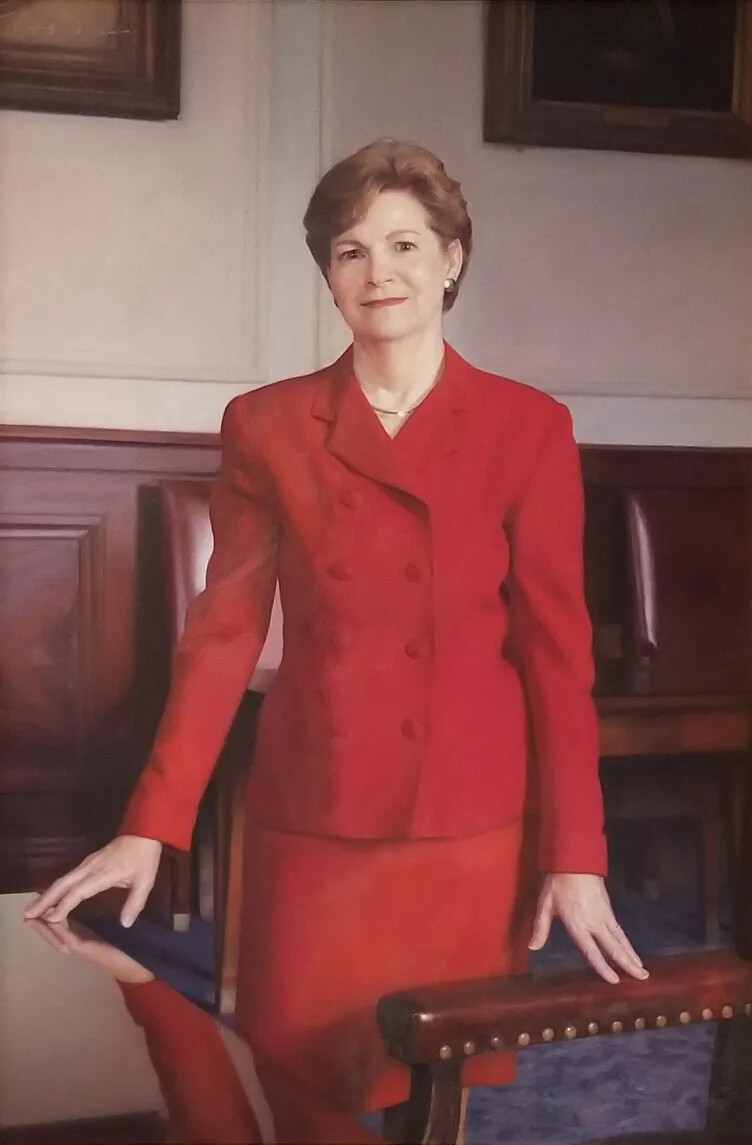
Caption:
Jeanne Shaheen was the first woman elected governor of New Hampshire. She was elected in 1996 and served three terms. In 2008 she was elected U.S. Senator from New Hampshire, the first woman in American history to serve as both a governor and a senator. She continues to serve in the U.S. Senate today. This portrait was painted by a New Hampshire artist in 2007 and is displayed in the State House. It is a tradition that New Hampshire governors have their portraits painted and hung in the State House.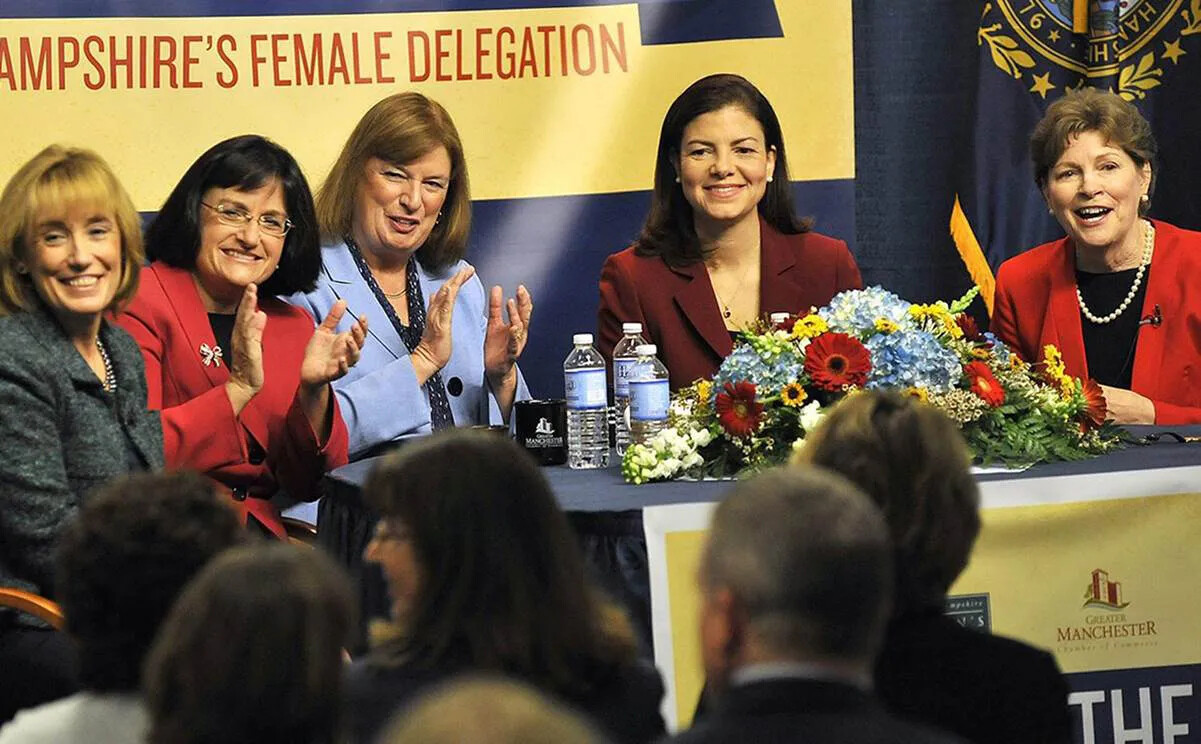
Caption:
New Hampshire made history in 2012 when it became the first state to have all of its representatives in Congress—both U.S. Senators and both U.S. Representatives—be women. Granite Staters also elected a woman to be governor that year. In this picture, left to right, are Governor Maggie Hassan, Representative Ann McLane Kuster, Representative Carol Shea-Porter, Senator Kelly Ayotte, and Senator Jeanne Shaheen in December 2012.Caption:
In 2012, New Hampshire became the first state in the country to have all its representatives to the federal government be women. The Granite State’s two senators that year were Jeanne Shaheen and Kelly Ayotte. New Hampshire’s two delegates to the House of Representatives were Ann McLane Kuster and Carol Shea Porter. New Hampshire’s governor was also a woman, Maggie Hassan.In 2012, New Hampshire voters again made history when all of the state's representatives to the federal government were women. New Hampshire was the first state in the nation to have all of our representatives in Congress—both the U.S. House of Representatives and the U.S. Senate—be women. Voters also chose a woman to be governor that year.
Let's Review!
What are the big ideas in this section?
Town Government
New Hampshire towns continue to play a very important role in governing the state. Recent changes to the way towns conduct their town meetings have been intended to get more people involved in making decisions at the town level.
Republicans and Democrats
For most of the 20th century, Granite Staters voted mostly for Republicans, but in the early 21st century, voters are split more evenly between Republicans and Democrats.
Independent Voters
There are more independent voters in New Hampshire than there members of either political party. New Hampshire's percentage of independent voters is higher than in most other states.
Women in Government
New Hampshire voters often support women for high office, including governor. In 2012, New Hampshire became the first state in the country to elect an entirely female delegation to the U.S. Congress.
Unit 17 Student Reading
A printable version of the student reading for this unit, without pictures or graphics.


